Iceland 360 VR
Search keywords Find it!
Tip: Rotate your device to landscape for fullscreen.

South Coast VR tour
virtualtour

The first panorama is from Hveragerði , a small town and municipality in the south of Iceland located 45 km to the east of Reykjavík on Iceland’s main ringroad, Route 1. This 360 panorama is shot during the town festival Blómstrandi dagar í Hveragerði. A vast number of people pass through or by Hveragerði in south Iceland each year. Located between Reykjavík, Iceland and Selfoss, Iceland, Hveragerði may be seen from the vantage point of the mountain slope, as it spreads out across a 5,000 year-old lava field. Troughout the year, pillars of steam from the numerous hot springs in the town may be seen rising up out of the ground. During summer the town is truly a green community, abounding in trees. There are walking and riding trails from the town into Ölfusdalur valley, the Hengill area and all the way to Nesjavellir Geothermal Power Station and the national park Þingvellir, Arnessysla, Iceland. On the route you will find warm natural pools and rivers for bathing in the Hot River, Reykjadalur, Iceland. To South Iceland Tourist Information Center provides information about hiking trails, various activities, museums, exhibitions, culture, art, accommodation, services and guided tours of Hveragerði and its surroundings. See more travel information at https://www.south.is/”}” To South Iceland Tourist Information Center provides information about hiking trails, various activities, museums, exhibitions, culture, art, accommodation, services and guided tours of Hveragerði and its surroundings. See more travel information at https://www.south.is/
We continue our journey along the south shore and visit the first large waterfall, Seljalandsfoss , which is one of the best known waterfalls in Iceland and has become one of the most popular tourist destinations in Iceland. Seljalandsfoss is located between Hvolsvöllur and Skógar, just of the Ring Road (Route nr.1) on the south coast of Iceland, by the road that leads to Thórsmörk (Road 249). Seljalandsfoss is not far from Reykjavík, Iceland, only ca 120 kilometres, which makes it a popular destination for tourists travelling along the south coast and it´s possible to visit both Seljalandsfoss and nearby Skógafoss and return back to Reykjavík on the same day. The waterfall drops 60 m (197 ft) and is part of the Seljalands River that has its origin in the infamous volcano glacier Eyjafjallajökull. Visitors can walk along a path that goes behind the waterfall. You can spot Seljalandsfoss from the ring-road long before you reach it and on a clear day it can be a breathtaking sight to watch it getting closer and closer. In the dark winter months the waterfall is lit up by floodlights at night which makes a nighttime visit highly recommended.
Next stop is another majestic waterfall, Skógafoss , a waterfall in the Skógá River on the south coast of Iceland, at the cliffs of the former coastline. After the coastline had receded seaward (it is now at a distance of about 5 kilometres (3.1 miles) from Skógar), the former sea cliffs remained, parallel to the coast over hundreds of kilometres, creating together with some mountains a clear border between the coastal lowlands and the Highlands of Iceland. The staircase leading to the viewing platform by Skógafoss is also the starting point of the well known hiking route Fimmvörðuháls, between Skógar and Thórsmörk.
Our next location are the sea cliffs of Dyrhólaey , which is a 120-metre high promontory, not far from the town Vík and the famous black sand beach at Reynisdrangar . The place got its name from the massive arch that the sea has eroded from the headland. (The name literally means “door-hole-island”). When the sea is calm, big boats can sail through it. There has even been a daredevil pilot that flew through the arch with a small-craft airplane! From the top of Dyrhólaey there is a great view of the surrounding area. The headland is thought to have been made in an underwater volcanic eruption late in the glacial period, not unlike the eruption of Surtsey. Dyrhólaey has been a natural reserve since 1978. There is a local legend about a monster having lived here for many centuries. The monster seems to have disappeared after a landslide over 100 years ago. Birdlife here is abundant, with puffins and eider ducks being the most common species in the area. The lighthouse on the top of the cliff stands impressive and stoic in this often very windy area. Although people have actually surfed here (under optimal conditions in wet suits), the rip tides and currents are devious and one should never attempt to go into the water! Leave the swimming to the numerous seals which one often can see in the area.
We continue our tour towards Reynisdrangar, basalt sea stacks situated under the mountain Reynisfjall near the village Vík í Mýrdal , southern Iceland which is framed by the famous black sand beach Reynisfjara , that was ranked in 1991 as one of the ten most beautiful non-tropical beaches in the world. Reynisfjall is a 340 m high tuff mountain arising out of a volcanic eruption from under a glacier in the penultimate Ice Age, near the village of Vik. Alternating in an irregular manner are layers of tuff, pillow lava and columnar basalt veins and loops. Legend says that the stacks originated when two trolls dragged a three-masted ship to land unsuccessfully and when daylight broke they became needles of rock. Nota Bene: The waves at Reynisfjara are especially strong and unpredictable, and fatal accidents have occurred at this beach, so people are advised to take extra care when visiting the area.
Vík í Mýrdal is a remote seafront village in south Iceland. It sits in the shadow of Mýrdalsjökull glacier, which covers the Katla volcano. Reyniskirkja is a wooden church dating to 1929. Reynisfjara Black Sand Beach has black pebbles, basalt columns and the Reynisdrangar offshore rock formations. The cliffs of Reynisfjall mountain are home to seabirds such as puffins. Despite its small size (291 inhabitants as of January 2011) it is the largest settlement for some 70 km (43 mi) around and is an important staging post, thus it is indicated on road signs from a long distance away. It is an important service center for the inhabitants of and visitors to the coastal strip between Skógar and the west edge of the Mýrdalssandur glacial outwash plain. Vík lies directly south of the Mýrdalsjökull glacier, which itself is on top of the Katla volcano. The volcano Katla , which is a part of Katla Unesco Global Geopark – Iceland, has not erupted since 1918, and this longer than typical dormant period has led to speculation that an eruption may occur soon. An eruption of Katla could melt enough ice to trigger an enormous flash flood, potentially large enough to obliterate the entire town. The town’s church, located high on a hill, is believed to be the only building that would survive such a flood. The town has 1,400 hotel rooms for scientists and tourists, who are also briefed about Katla’s dangers.
Our next stop is the village Kirkjubæjarklaustur (Icelandic for “church farm cloister”) which is one of the smallest villages in the south of Iceland on the Hringvegur (road no. 1 or Ring Road) between Vík í Mýrdal and Höfn . It is part of the municipality of Skaftárhreppur and has about 120 inhabitants. Kirkjubæjarklaustur’s geographical location makes it better known than other villages its size. It is the only place between Vík and Höfn which offers services such as a fuel station, a bank, a post office and a supermarket. Nearby tourist attractions include Fjaðrárgljúfur , the Lakagigar craters, the Eldgjá canyon and Skaftafell – Vatnajökull National Park.
We continue our journey towards the biggest glacier in Iceland, Vatnajökull. Öræfajökull (The highest part of Vatnajökull) is an ice-covered volcano in south-east Iceland. The largest active volcano and the highest peak in Iceland at 2,110 metres (6,920 ft), it lies within the Vatnajökull National Park and is covered by the glacier. Seen here from the black desert sands of Skeiðarársandur. The sand is carved by millennia of glacial floods that have come flowing from nearby glaciers Skaftafellsjökull , Svínafellsjökull , Skeiðarárjökull and Morsárjökull . The bridge in the foreground is regularly swept away out to sea by massive glacial flood waves that come rushing down the sands. The snowy peak in the middle is Hvannadalshnúkur , pyramidal peak on the northwestern rim of the summit crater of the Öræfajökull volcano in Iceland and is the highest in Iceland. An official measurement completed in August 2005 established the height of the mountain as 2,109.6 metres (6,921 ft) (previously set as 2,119 m (6,952 ft)) The route to the top is a popular climb through numerous and frequently hidden crevasses, and, because of this, the climb calls for experienced mountain guides.
We end our journey at one of Iceland´s natural wonders, Jökulsárlón , which is a glacial lagoon, bordering Vatnajökull National Park in southeastern Iceland. Its still, blue waters are dotted with icebergs from the surrounding Breiðamerkurjökull Glacier, part of larger Vatnajökull Glacier. The Glacier Lagoon flows through a short waterway into the Atlantic Ocean, leaving chunks of ice on a black sand beach. In winter, the fish-filled lagoon hosts hundreds of seals. The lake can be seen from Route 1 between Höfn and Skaftafell. It appears as “a ghostly procession of luminous blue icebergs”. Jökulsárlón has been a setting for four Hollywood movies: A View to a Kill, Die Another Day, Lara Croft: Tomb Raider, and Batman Begins, as well as the reality TV series Amazing Race. The Jökulsárlón lake provides outstanding views of the ice cap, a vast dome of ice that rises to a height of 3,000 ft (910 m). It spills to the lagoon 12 mi (19 km) away from the jagged glacier hill to the edge of the water line. The lake developed only about 60 years ago (1948 is mentioned), when the entire area was less than 100 ft (30 m) of glacier, which was only 250 yd (230 m) from the Atlantic Ocean, and 2 mi (3.2 km) away from Vatnajökull. Vatnajökull was at the shore line of the ocean and dropped icebergs into the ocean. However, it started drifting inland rapidly every year, leaving deep gorges en route, which got filled with melted water and large chunks of ice. These icebergs gather at the mouth of the lake’s shallow exit, melt down into smaller ice blocks, and roll out into the sea. In summer, icebergs melt and roll down the channel into the sea. The lake does not freeze in winter. Ice water and soil make a unique ecological phenomenon.[citation needed] Jökulsárlón Lake, the “glacier lake”, is now reported to have doubled in size in the recent 15-year period. The huge blocks of ice that calve from the edge of Vatnajökull are about 30 m (98 ft) high, which fills the lagoon stocked with icebergs. Some icebergs appear naturally sculpted on account volcanic ash from ancient eruptions that partly covers them.
Chase the Midnight Sun: Iceland and Canada tours available now!
Reykjavik Tours
FlyOver Iceland
Virtual tour & bird’s eye view of iceland.
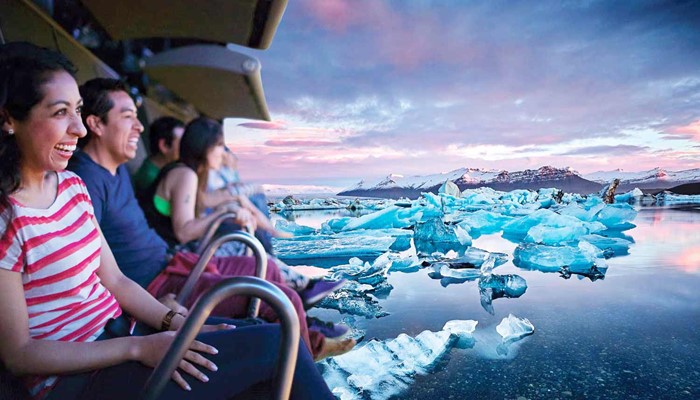
Join us in Reykjavik for an interactive tour of Iceland’s history and natural wonders!
- Interactive exhibits
- Simulated flight over Iceland
- Narrated history tours
- Admission ticket
- Pick-up (optional)
What to bring
- Comfortable shoes
Tour Snapshot
- No Booking Fees
- Fast & secure payment
FlyOver Iceland is a brand-new, interactive experience of Iceland's history and geological wonders. The main experience takes you on an exhilarating aerial journey over Iceland's most impressive natural sights. We use state-of-the-art technology to simulate like you’re actually flying. The other two shows transport you back in time. Discover how the land of fire and ice formed eons ago. Witness history and see how Vikings and their descendants survived on the land. If you’re looking for an immersive and educational experience, then FlyOver Iceland is the one for you!
Join us in Reykjavik for an immersive, family-friendly experience that will take you on an aerial journey across Iceland.
What is FlyOver Iceland?
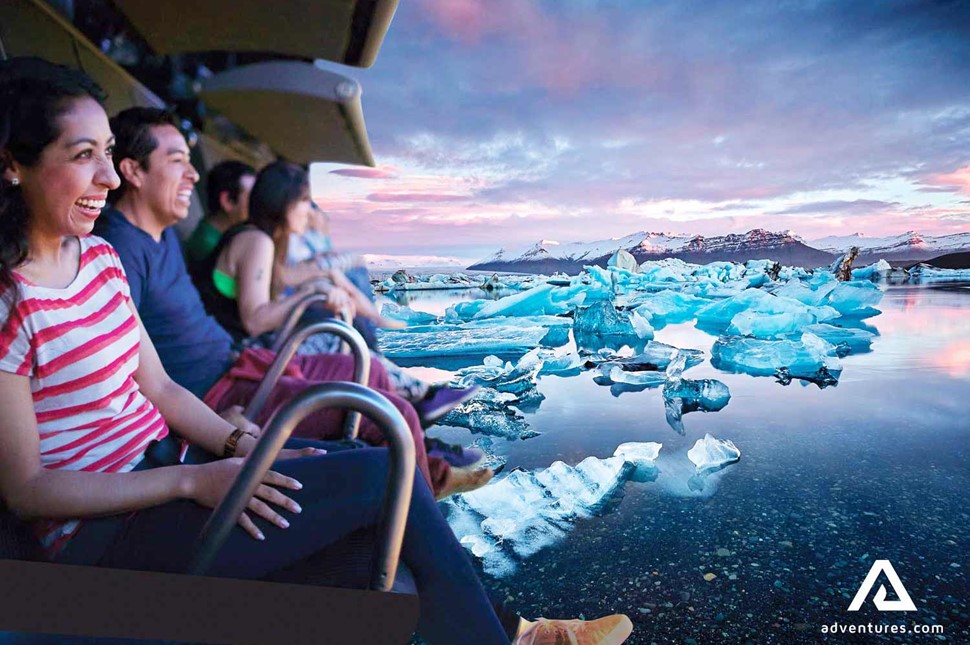
FlyOver Iceland is a new, virtual experience that takes you on an incredible aerial journey across Iceland. Using state-of-the-art technology, FlyOver dangles you above a 20-meter spherical screen. You’ll have a bird's eye view of many sprawling glaciers, volcanoes and fjords in Iceland. The exhibit also utilizes special effects to simulate flight. See Iceland from a whole new perspective!
Other Parts of the FlyOver Iceland Experience
FlyOver Iceland also offers two other fascinating shows, which depict the roles and impact of humans and nature over time. From volcanoes and glaciers to Vikings and trolls, there’s no better way to learn more about Iceland than these remarkable shows.
The Longhouse
Your journey begins in a historic Viking longhouse, with an Icelandic narrator teaching you about Iceland’s rich history. This fascinating story is brought to life, via a wonderful shadow-show that brings the story off the page and makes it truly interactive.
The Well of Time
The Well of Time is an amazing immersive journey that takes you through the entirety of Icelandic history. Your guide and narrator is a troll called Sú Vitra, designed by renowned illustrator Brian Pilkington. He’ll be sure to engage the younger members of the family in the story. A character from the sagas, Sú Vitra is older than recorded history, she symbolizes the wisdom and enchantment of Iceland.
Sú Vitra takes you on a journey through three interesting parts of Iceland’s history. From the time the land was uninhabited, to the age of the first settlement. Learn how the Vikings came to settle and how they survived Iceland’s extreme conditions.
Free Shuttle Bus
The free shuttle picks up from FlyOver Iceland – Harpa – Hlemmur – Icelandair Hotel Hilton – Grand Hótel. It runs once an hour from 11 AM to 5 PM daily.
Similar tours that people also viewed

Reykjavik City Card
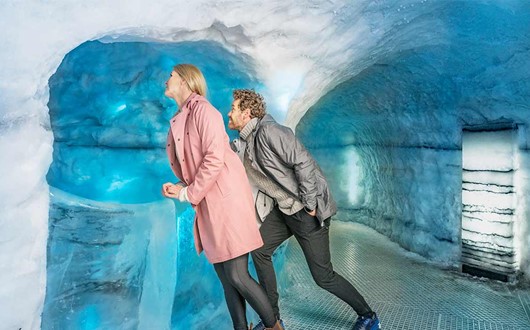
Perlan Museum Admission Tickets
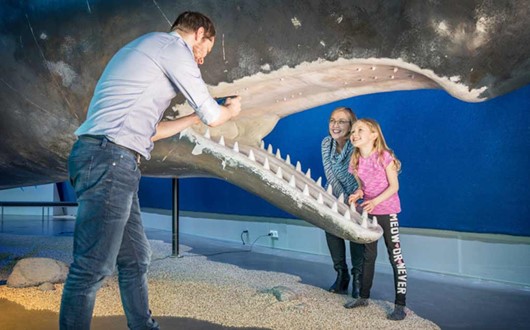
Whales of Iceland Museum - Admission Tickets
Contact us for more information about this tour.
Adventures.com offers pick up service from selected Reykjavík pick up points. Note that you can always update your pick-up / drop-off location through our customer portal: https://my.adventures.com You can press the login button in your confirmation email for an easy login to the customer portal. If you experience an error with logging into the customer portal or can't find your booking, please contact us on Facebook Messenger, or send us a message here below. Chat with us on Facebook Messenger
- Connecticut
- Massachusetts
- Mississippi
- New Hampshire
- North Carolina
- North Dakota
- Pennsylvania
- Rhode Island
- South Carolina
- South Dakota
- Washington DC
- West Virginia
- Bosnia and Herzegovina
- Netherlands
- North Macedonia
- Northern Ireland
- Republic of Moldova
- Switzerland
- Vatican City
- South Africa
- Philippines
- Russian Federation
- Saudi Arabia
- South Korea
- Turkmenistan
- United Arab Emirates
- Antigua and Barbuda
- Saint Kitts & Nevis
- Saint Lucia
- Saint Vincent
- Trinidad & Tobago
- Marshall Islands
- New Zealand
- Papua New Guinea
- Solomon Islands
- El Salvador
- Arctic – North Pole
- Antarctica – South Pole
- Hotels & Resorts
- National Monuments
- National Parks
- Universities
- VR-AR-360 Events 2022 & 2023
- ASTA Events 2022
- VR Glossary
- List With Us

The Summers – Germany is waiting!
Lithuania. real is beautiful., visit the matobo national park, zimbabwe, climbing mount rainier.
- Czech Republic
- Liechtenstein
- United Kingdom
- Featured posts
- Most popular
- 7 days popular
- By review score
Come and be Inspired by Iceland
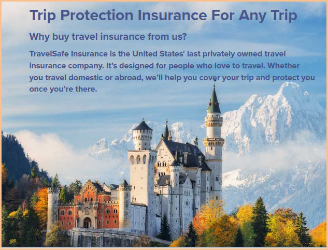
- Privacy Policy
Thanks for visiting nordicvisitor.com! For the very best browsing experience on our website, we urge you to upgrade to the most recent version of your browser . Some of our site features may not function properly on older versions.
- Travel Update
- Search Suggested Results View All Results
- EUR (€)
- GBP (£)
- Self-Drive i
- Privately Guided i
- Guided Small Groups i
- Northern Lights i
- Honeymoon & Romance i
- Ice & Snow Hotels i
- All Travel Styles
- Show all tours
- Best Sellers
- Special Offers
- Scandinavia
- Switzerland
- United Kingdom
- Book With Confidence i
- Why book with us i
- Booking Terms i
- Sustainability Policy i
- Manage Booking
- Privacy policy
Iceland Bíldshöfði 20 110 Reykjavík +354 578 20 80 View Map
Sweden Scotland View Details
A Virtual Tour of Iceland from Home
Iceland is the country of jagged mountains, hot springs, vast glaciers and stunning coastline. Known for its Viking heritage, geothermal energy and welcoming people, it makes for a dream destination for people around the world.
But maybe the 2020-21 pandemic has forced you to postpone a trip to the Land of Fire and Ice? While you wait for your travels, we invite you to take on a virtual tour of Iceland with us.
With the help of Google Maps Street View, go on an online adventure around the country. Based on our Iceland Full Circle Classic , you’ll see the best highlights of the Ring Road. And don’t forget some views are 360° so you can drag the image around for more.
Welcome to (virtual) Iceland!
- To visit the top highlights in the shining midnight sun, browse these Iceland summer tours
Day 1: Arrival in Reykjavík
Snap your fingers and your flight is over. You’re stepping out of the airport into the fresh air and lunar-like landscape of the Reykjanes peninsula. You’ll then journey to the capital of Iceland, Reykjavík.
You have time to explore this colourful city today. We recommend walking along the Faxaflói bay. Here you’ll find the Sun Voyager and the shiny Harpa Concert Hall. You also shouldn’t miss the main street Laugavegur, dotted with shops, restaurants and bars.
Nearby, you can spot the tall Hallgrímskirkja cathedral. It’s free to visit, but you can pay a small fee to go up the tower. You’ll be rewarded by a wonderful view over the city, bay and nearby mountains.
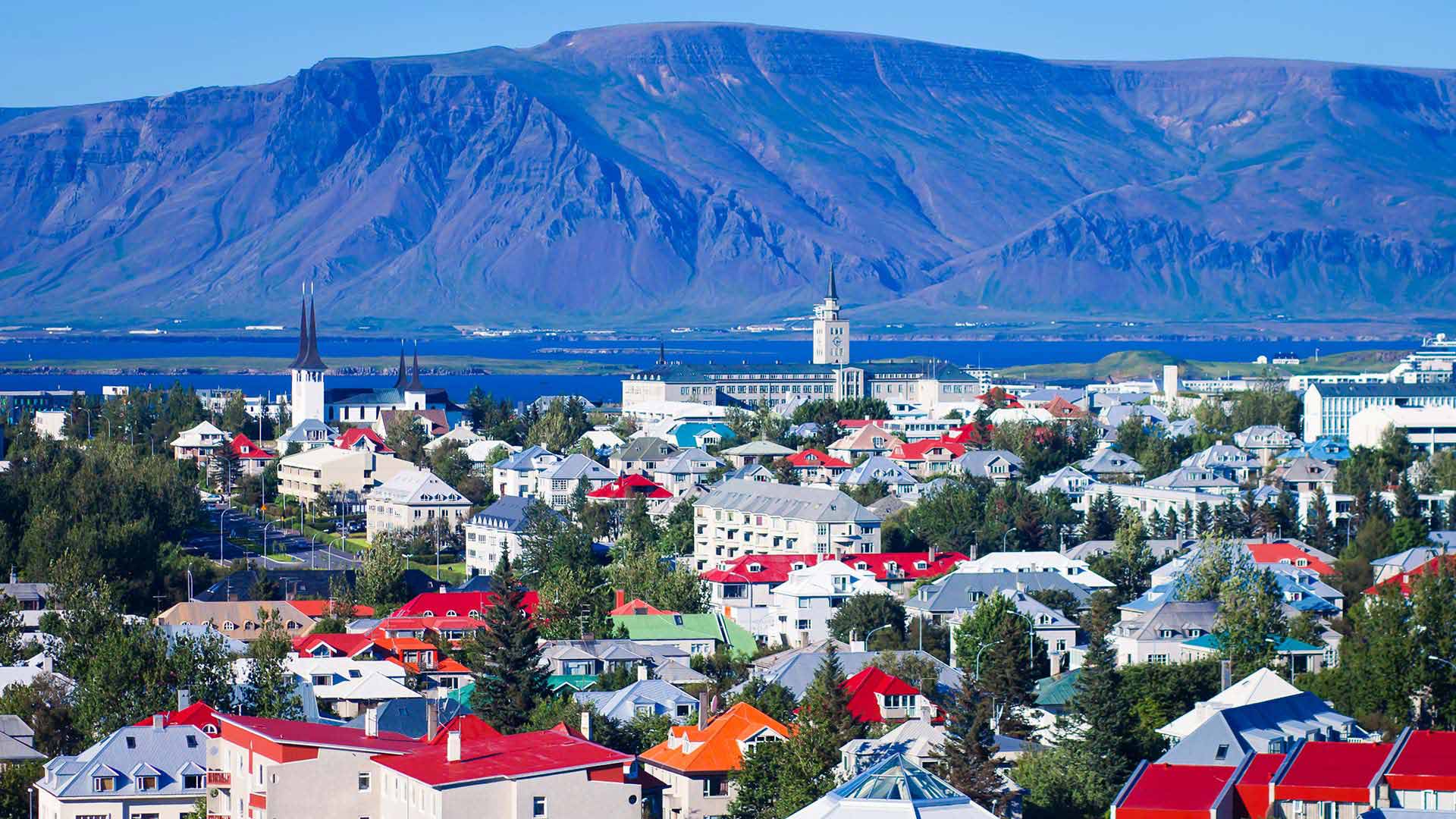
Day 2: The Golden Circle
This morning, you get started on your road trip. Imagine yourself breezing through the sweeping landscape, your favourite music playing. Go ahead and put it on, it’ll add to the experience!
The first part of the itinerary is the famous Golden Circle. This semi-circular route is located between the capital and the South Coast and is home to many popular attractions.
This day itinerary is made up of three locations. First, take in the grandiosity of Gullfoss waterfall , in all its thundering power. You can then see geysers erupting at the steaming, geothermal Geysir and Strokkur area .
Finally, have a walk at the historic Þingvellir National Park . It is a UNESCO World Heritage Site and is where the two continental plates of Eurasia and North America meet.
You can finish your day by stopping to take a photo of the impressive crater of Kerið .
- A great way to pair independent travel with day trips is to take on a multi-day tour of Iceland
Day 3: Waterfalls and beaches
Today is another day of impressive sights along the south coast of Iceland. You’ll first admire the views of the Seljalandsfoss waterfall , where you can walk behind the cascade, and the gorgeous 60-metre (197 feet) high Skógafoss waterfall .
You’ll then stop by Vík, a quaint seafront village. It is mostly known for its proximity to the beautiful volcanic beach of Reynisfjara . It is striking with its black sand and basalt columns. From the beach, don’t miss the arched cliff of Dyrhólaey and the Reynisdrangar sea stacks .
The last stop of the day is to the stunning Fjaðrárgljúfur canyon . It’s a perfect spot to go hiking or simply admire the views (as you’re doing today).
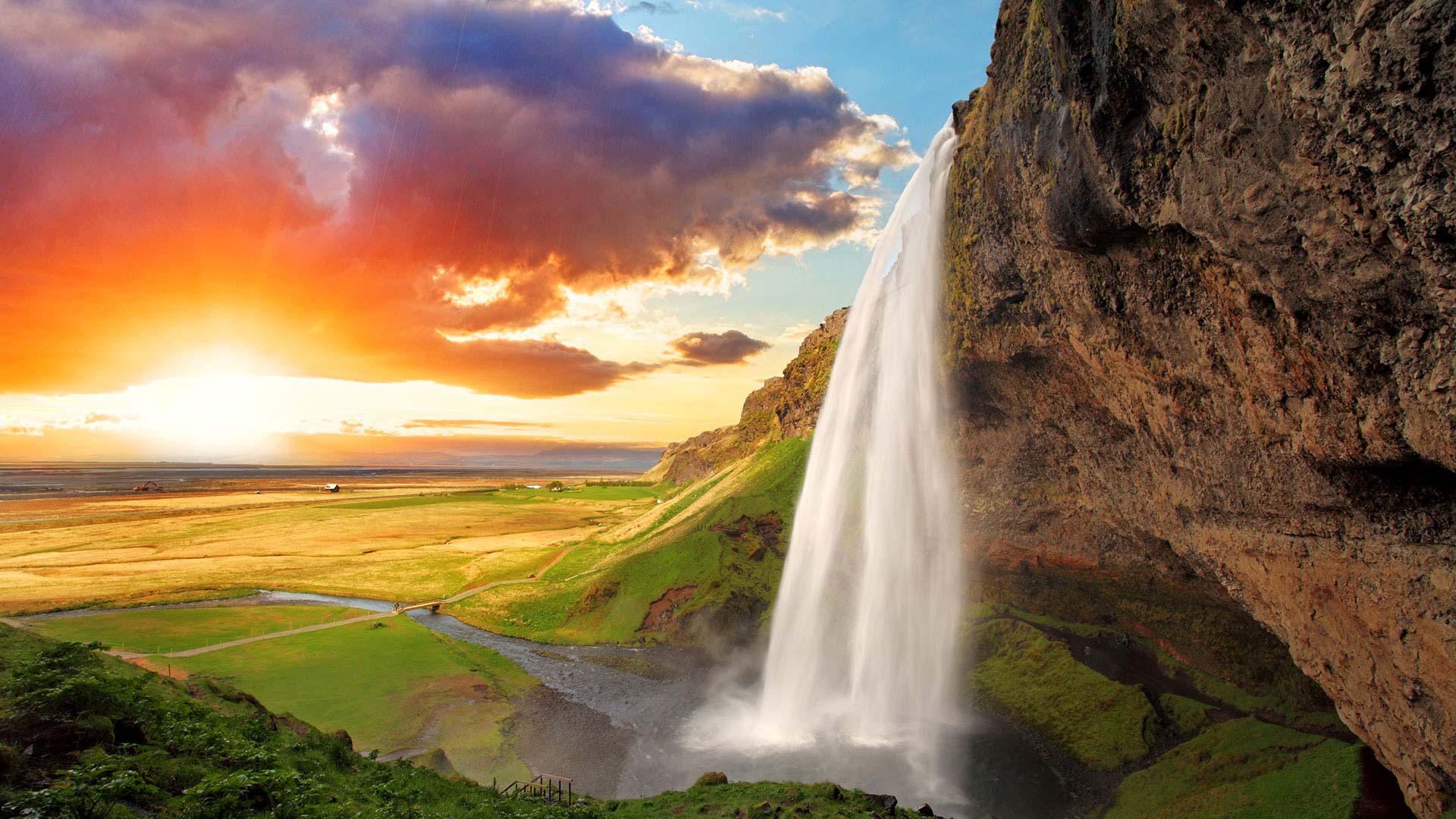
Day 4: Highlights of the south coast
Explore the southern part of the immense Vatnajökull National Park. Skaftafell is a preservation area located here, which is famous with hikers. If you’d rather keep it short, a quick walk will take you to the beautiful Svartifoss waterfall .
When you’re here in person, you may want to take on adventures to really discover this area. There are many pursuits you could choose from, including glacier walking and ice climbing.
You’ll then experience the real "gems" of Iceland. Stop by the amazing Jökulsárlón Glacier Lagoon . You could even join a boat ride among the maze of floating icebergs. Across the road from this location, you’ll find the famous Diamond Beach .
- Our Iceland self-drive tours are the ideal road trips to discover the island at your own pace
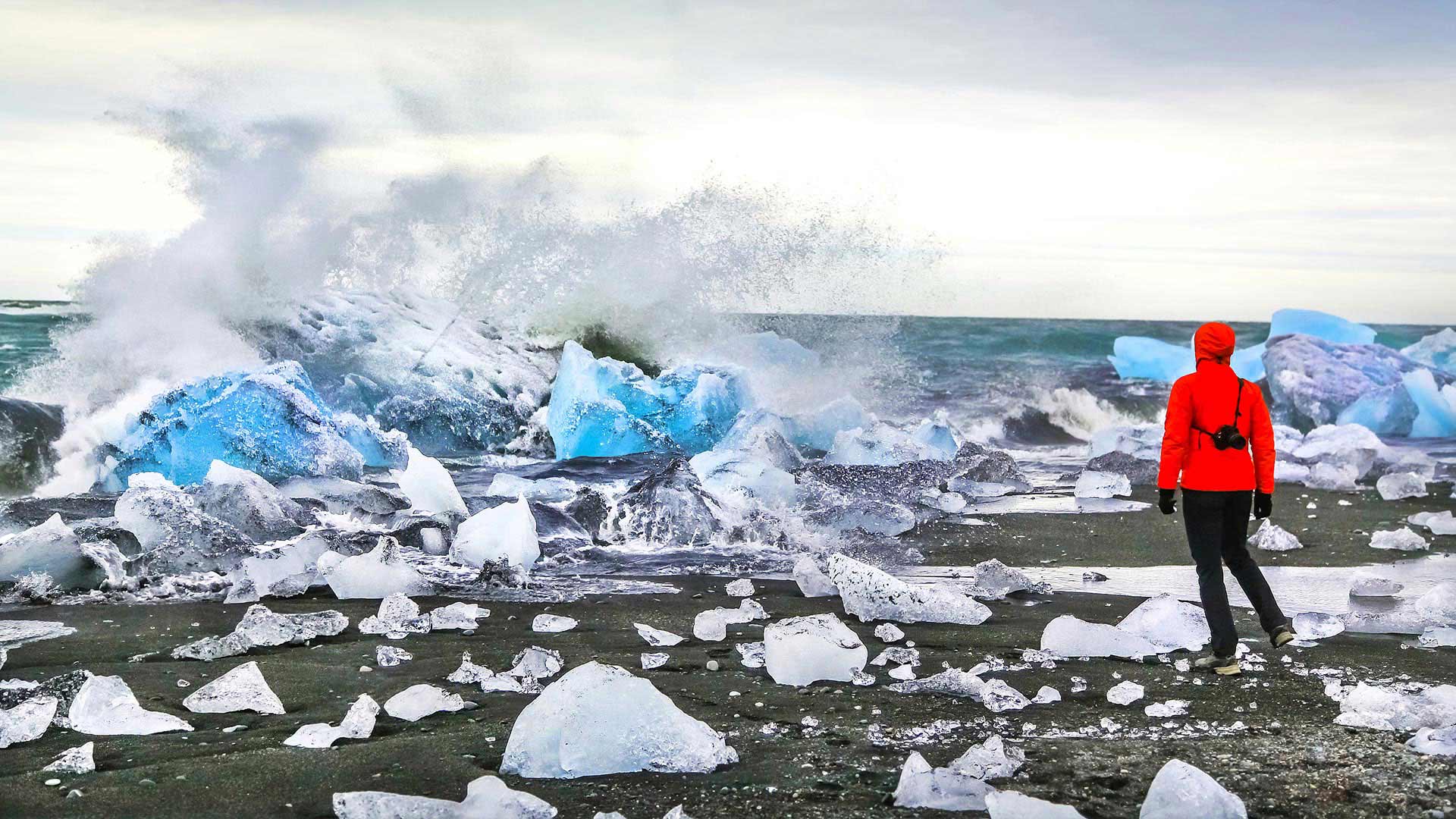
Day 5: From the Eastfjords to North Iceland
You have a long day of driving ahead, but it’ll go by quickly we swear! First, drive along East Iceland , which is characterised by sweeping fjords and lovely fishing villages. It is a region that you could explore in more depth on a longer tour.
And here you are! You’re already at your destination, the otherworldly Lake Mývatn. There are so many interesting locations to visit in this area. You have today and tomorrow to explore as you wish.
Why not take a walk at the Krafla volcano or drive along the Námaskarð pass? You could pop by the massive crater of Hverfell and admire the lunar-like craters at Skútustaðir .
- A privately guided tour of Iceland allows you to relax and take in the sights with a local at the wheel
Day 6: Lake Mývatn
Visit more of this interesting area or go on fun excursions. Nearby, you could hop onboard a whale-watching boat tour from the village of Húsavík . It is known as the “whale watching capital of Iceland” after all!
We also recommend driving through the northern part of the Vatnajökull National Park and visiting more sights along the way. Two great stops are the Ásbyrgi canyon and the most powerful waterfall in Europe, Dettifoss .
To relax after all this fun, go bathing in the warm geothermal waters of the Mývatn Nature Baths . At the height of summer, you can bask in the glow of the midnight sun until well past midnight.
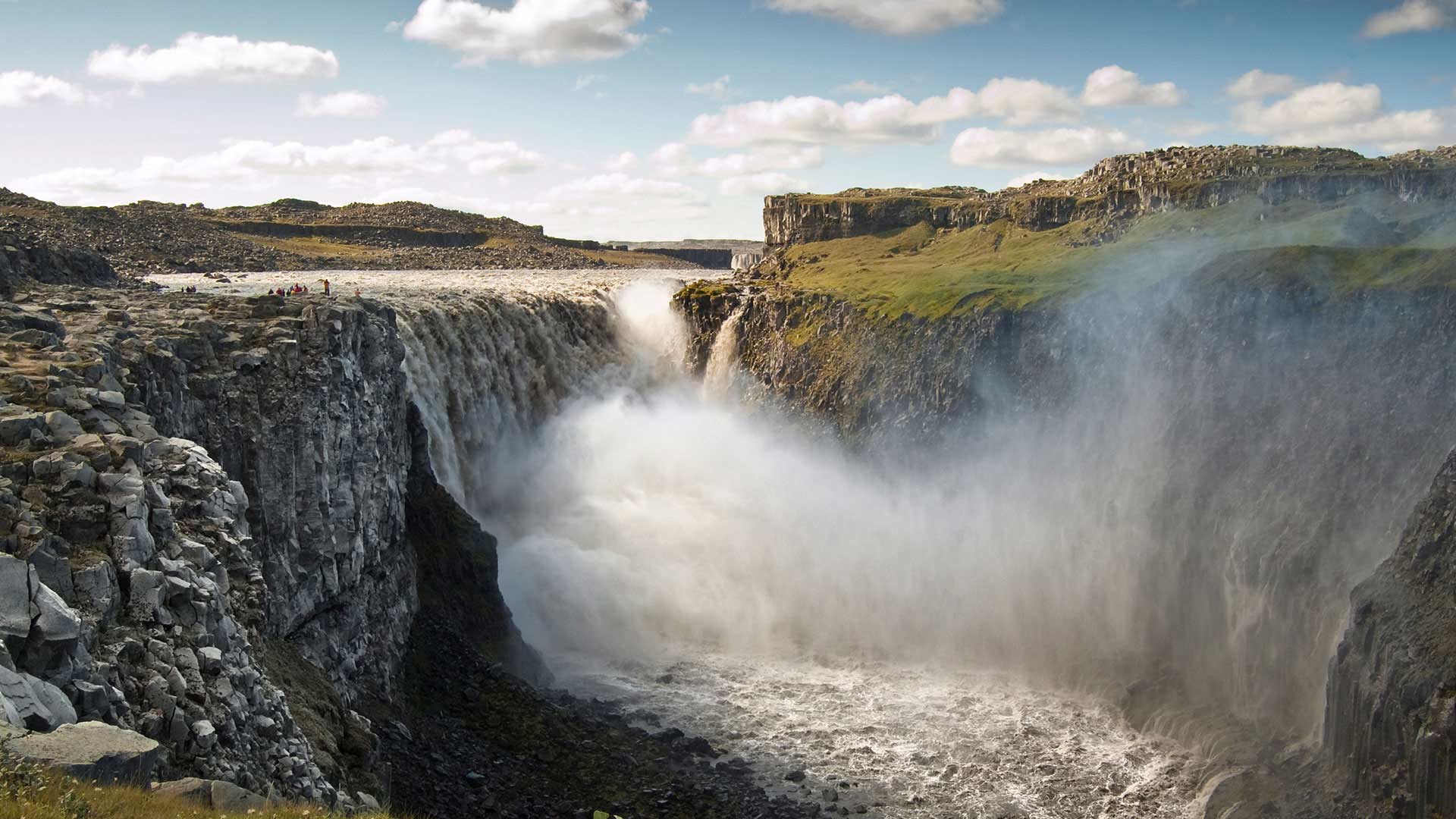
Day 7: Exploring North Iceland
For this morning, you shouldn’t miss a visit to Goðafoss , or “The Waterfall of the Gods”. You’ll then make your way to Akureyri , known as the capital of the north. You can spend some time visiting the museums, shops and even the world's most northerly botanical garden .
Later, you could head straight to Skagafjörður or take a worthwhile detour through the Tröllaskagi , or “The Peninsula of the Trolls”. There is some fantastic scenery along this road.
You’ll then continue through Siglufjörður , once the centre of Iceland’s herring fleet, and Hofsós , where you can relax in its thermal pool.
Your last stop of the day is Skagafjörður. It is known for its purebred Icelandic horses, so it’s perhaps the perfect time to go horseback riding in the stunning landscape.
- If you’re planning to discover Scotland at your own pace, check out our Scotland self-drive tours
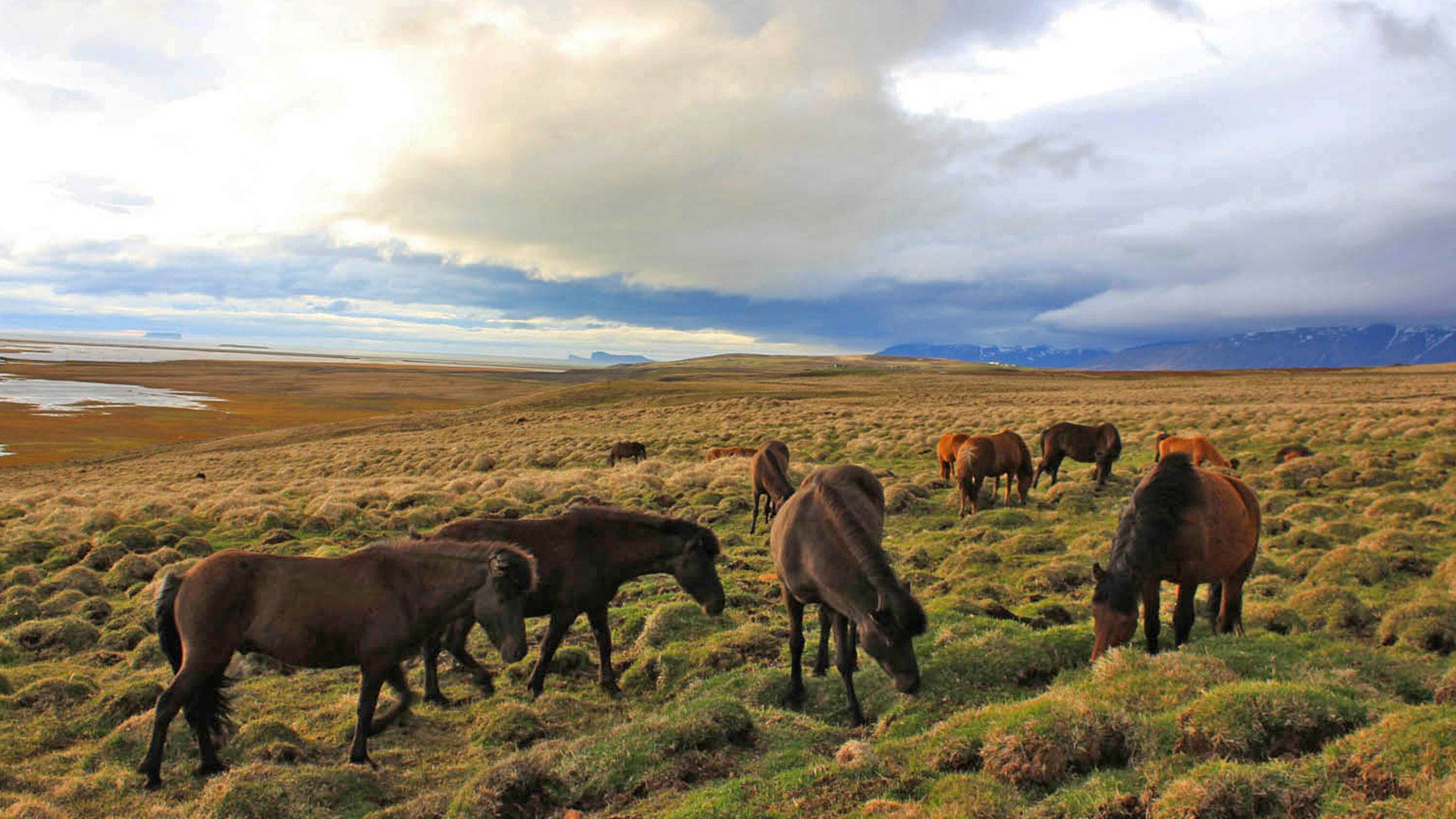
Day 8: Journey to the Snæfellsnes peninsula
The last stretch of your journey is to the beautiful Snæfellsnes peninsula.
On the way there today, you can admire and visit many attractions. There are the mounds of Vatnsdalshólar and the beautiful Þingeyrakirkja church. You could also learn about famous Viking Erik the Red at the living museum at Eiríksstaðir . Or take a warm dip at the geothermal pool of Guðrúnarlaug .
You can also visit Stykkishólmur , a picture-perfect fishing village overlooking Breiðafjörður bay. Our top tip is to walk up the local hill, Súgandisey , for a panoramic view over the town, sea and surrounding mountains.
- Browse our small group tours for a structured way to visit Iceland with likeminded travellers and a local guide
Day 9: Snæfellsjökull National Park
While you’re travelling along this western peninsula, you must experience the stunning Snæfellsjökull National Park. It contains lush valleys and lava fields and is known for its thriving birdlife.
The highlights include Dritvík Cove , Lóndrangar Cliffs as well as Hellnar and Arnarstapi Cliffs . You could also add one more black volcanic beach to your itinerary and stop by Djúpalónssandur .
You'll then make your way back to Reykjavík for the last night of your Icelandic adventure.
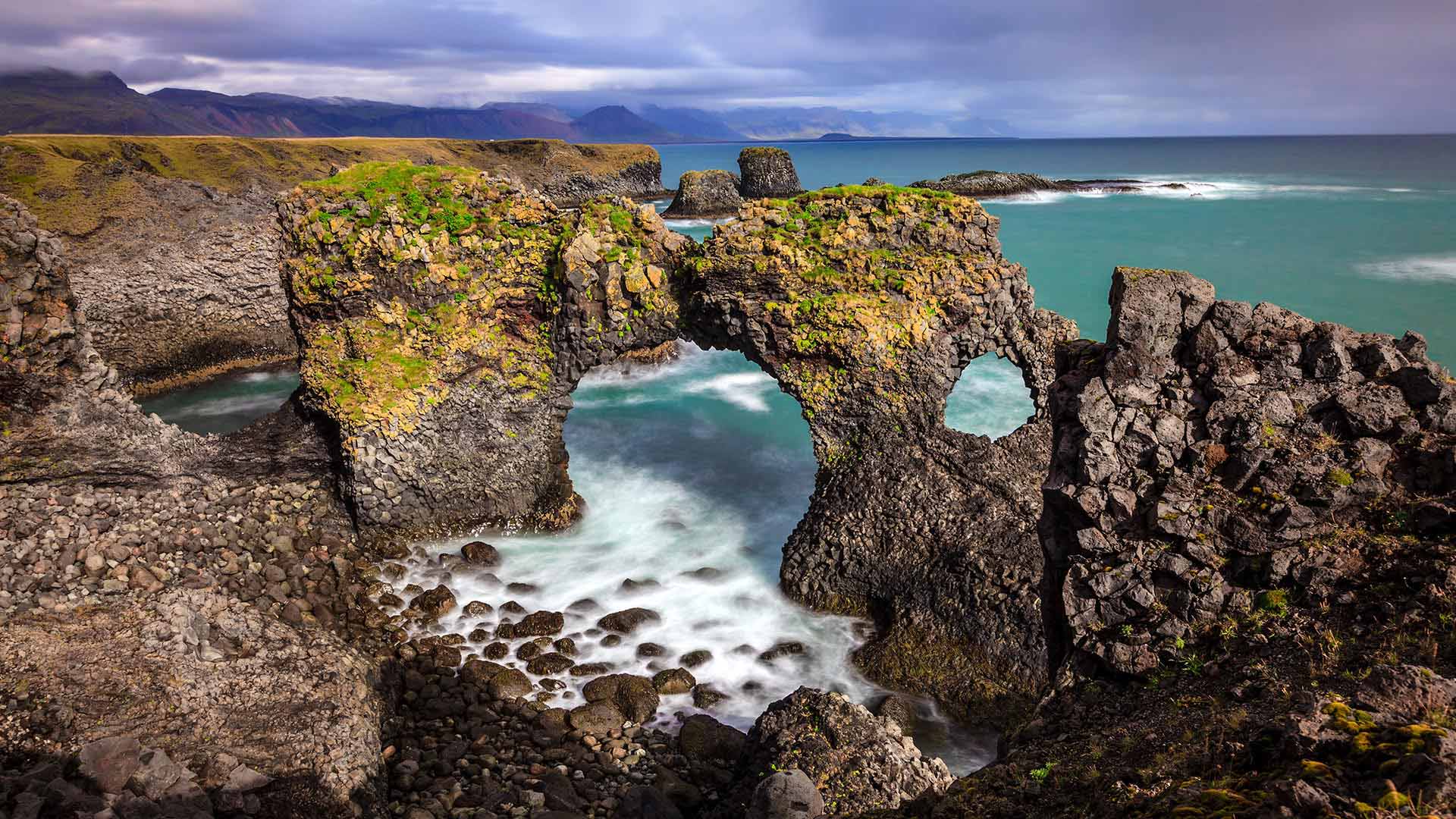
Day 10: Departure
Today is the time when you must leave Iceland and return home. If your flight is later, you could explore Reykjavík one last time and pick up a few more souvenirs.
You could also end your trip on a relaxing note with a stop at the Blue Lagoon geothermal spa. It is, after all, on the way to the airport.
- To take in more glacier and snowy landscapes, and even catch sight of the northern lights, visit Iceland during the winter
While your online adventure around Iceland is over, your trip to the Land of Fire and Ice can still become a reality. And if you must wait a little longer, fear not, this stunning landscape isn’t going anywhere.
When you’re ready to start planning, get in touch with our local travel experts . The Iceland consultants are based in Reykjavík and will use their insider knowledge to help you devise your ideal itinerary.

Camila grew up between the French Canadian and Chilean cultures, before moving to Scotland in 2012. When she’s not travelling or writing about travels, Camila loves to read, run, and puzzle. Her favourite destinations have been Reykjavík, Copenhagen, Estonia and Cape Town.
Find Camila on LinkedIn .
Getting there
We'd love to give you the same amazing travel experiences as you read about in our blog! To visit the destinations and attractions mentioned in this post - and to discover a few new highlights along the way - check out these recommended Nordic Visitor tours.
ICELAND FULL CIRCLE CLASSIC
- USD ($)
- CAD ($)
- AUD ($)
THE NATURAL WONDERS OF ICELAND - PRIVATE
Iceland complete classic, related posts, 18 top things to do in iceland: the best activities & sights.
Blogs , Activity , Iceland , My Destination , Road Trips , Things to Do
10 Best Places to Visit in Iceland
8 ways to experience glaciers in iceland, driving iceland's ring road: all you need to know.
14 of the best things to do in Iceland
Mar 31, 2024 • 12 min read
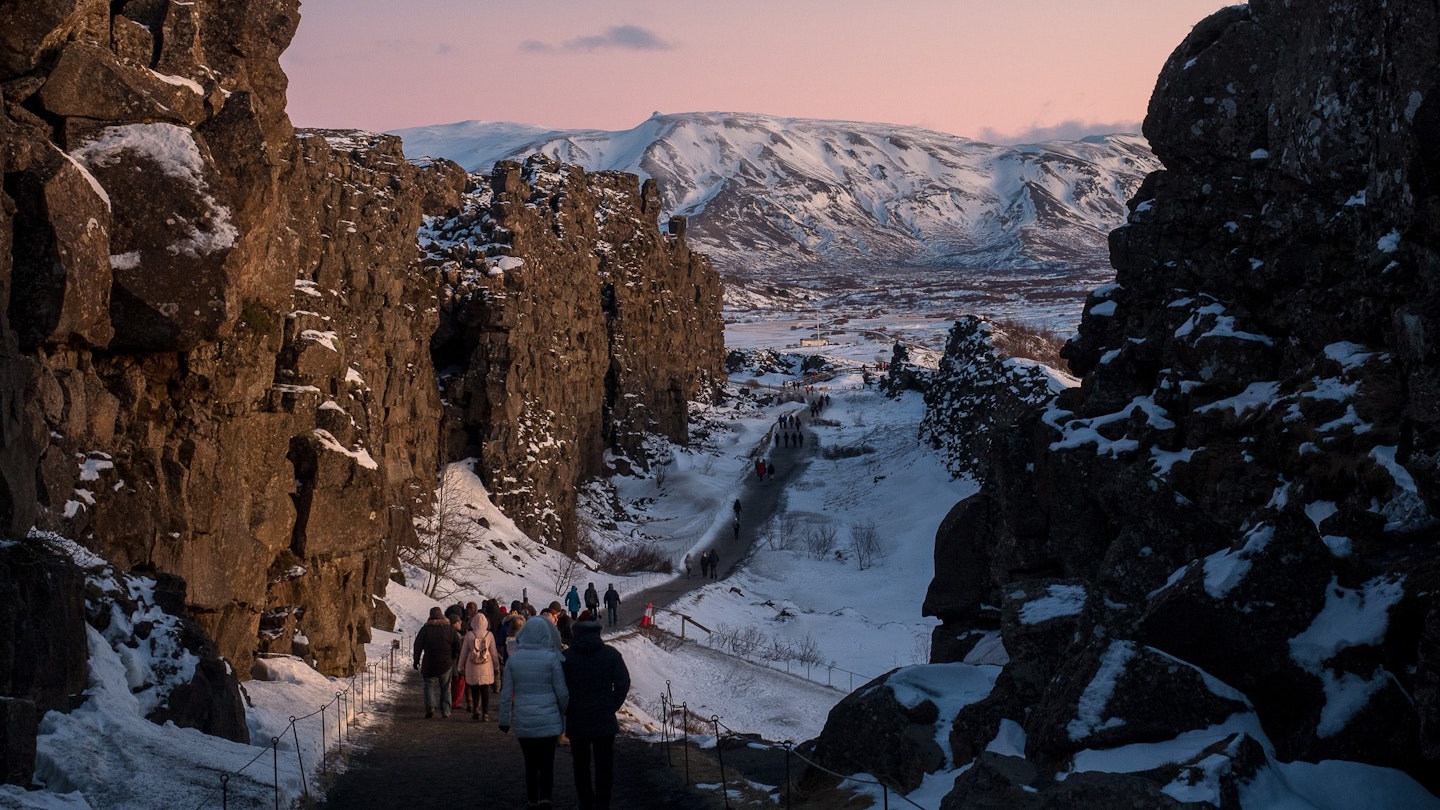
Here are Iceland's unmissable experiences © Damon Beckford / Getty Images
Few destinations capture the imagination like Iceland .
This volcanic land of ice and fire, of glacier-carved fjords, of freely-roaming horses, feels like nowhere else on earth. Here, you can take a soak in its geothermal baths and spas, delve into the history and legends of the Icelandic sagas, and explore otherworldly ice caves.
Iceland keeps visitors entranced for entire trips – and for years after. Experience some of that magic with these top things to do.
These are the 12 best places to visit in Iceland
1. See history brought back to life at Iceland's living museums
Iceland revels in bringing history back to life with numerous living museums that invite visitors to step back in time. You might bake bread over an open fire, listen to a story of ancient heroes and heroines, or swing a sword in an epic fight. You can step inside a replica longhouse at Eiríksstaðir in West Iceland or don VR goggles at 1238 – The Battle of Iceland to get an immersive experience of one of Iceland's most fearsome battles.
Each summer, a historic marketplace near Akureyri is brought back to life for the Gásir Medieval Days . Watch a blacksmith hammer a blade or smell scorched birch as it's transformed into charcoal. See boiling herbs dye wool or have a witch tell your fortune with ancient runes. You can even test your skills with a bow and arrow, or help to egg a thief. The country has plenty of other historic sites and intriguing exhibitions.
Planning tip: For more historic and mythic inspiration, check out the Icelandic Saga and Heritage Association .
Get to know more about Iceland's history with our guide to Icelandic sagas
2. Soak in geothermal baths and spas
For years the high-end bathing market in Iceland was dominated by the Blue Lagoon . The milky blue geothermal seawater in the middle of a lava field is still perfect for jetlag recovery – it helps that it's 20 minutes from the airport – but more geothermal baths and spas have popped up in recent years, attracting visitors for their elegant architecture, stunning settings, and unique bathing experiences.
The Mývatn Nature Baths in northern Iceland overlook Lake Mývatn and the surrounding bird-filled wetlands and volcanic landscapes. Situated on the banks of Lake Laugarvatn, Laugarvatn Fontana pipes in natural steam for its steam bath.
If you're looking for solitude, the Canyon Baths by Húsafell include a guided hike through stunning Icelandic wilderness followed by a dip in the secluded geothermal pools. For Insta-worthy views, Geosea in Húsavík overlooks Skjálfandi Bay and its snow-tipped mountains. Vök Baths near Egilsstaðir features geothermal pools floating in Urriðavatn Lake. Right on the capital's doorstep, Sky Lagoon in Kópavogur brings a fully Icelandic spa experience within reach for visitors to Reykjavík. Relax in the two pools (with swim-up bars) surrounded by woodland at the Forest Lagoon just outside Akureyri.
Local tip: Iceland has some serious etiquette rules , especially when it comes to hot springs. You should always shower with soap before taking a dip.
3. Have a night out in Reykjavík
In a country with comparatively high booze prices, Reykjavík 's nightlife is unmatched. Happy hours in Reykjavík usually begin at 4pm – cozy Port 9 and Veður are good places to start. For creative cocktails, head for Apótek and Slippbarinn and find a spot on Petersen svítan 's rooftop bar, which is wonderful on sunny days. If pubs are more your thing, check out KEX Hostel and Röntgen , where there's often live music to boot.
Kaffibarinn and Prikið are good choices if you want to dance the night away. The crowd at Dillon always goes crazy when "rock'n'roll grandma" Andrea Jónsdóttir starts DJ-ing at the weekends, and you'll find a similarly joyful atmosphere at Kiki Queer Bar .
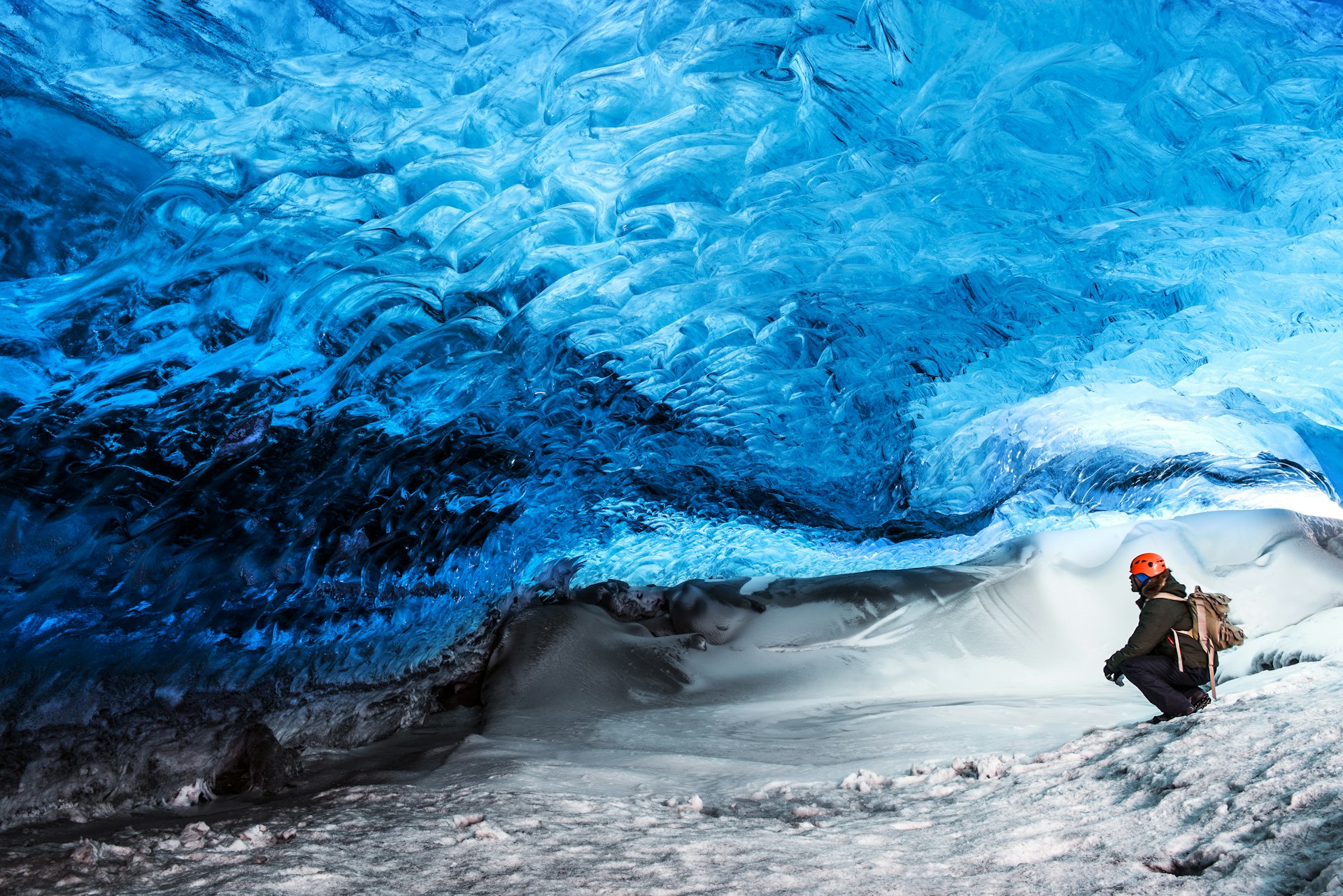
4. Explore Iceland's caves
From ancient lava tubes to ever-changing ice caves and mysterious artificial caves, Iceland has a range of underground adventures for everyone. Some 200 artificial caves have been carved into sandstone rock between Selfoss and Vík in South Iceland. Irish monks (called Papar in Icelandic) were thought to have created them before or around the time the first settlers arrived in the country, though the theory lacks sufficient archaeological evidence. Guided tours of 12 of these caves are available at the farm, Ægissíða by Hella.
Natural ice caves form in Vatnajökull , Europe's largest glacier, due to geothermal heat or spring thaw. This fleeting, crystalized world of wonder can only be explored with experienced guides. Alternatively, you can visit the artificial ice tunnel in Langjökull or the ice cave at Perlan in Reykjavík. There are myriad large and small lava caves, tubes and tunnels around Iceland, too, all of which reveal surprising colors and formations like stalactites and stalagmites that have formed over hundreds of years. Guided tours are offered in Víðgelmir near Húsafell, Iceland's largest lava cave, Vatnshellir on Snæfellsnes and Lofthellir near Lake Mývatn.
5. Check local information before hiking near active volcanoes
In Iceland, there are approximately 130 volcanoes, and eruptions occur every three years on average. The most recent activity is near Grindavík on the Reykjanes Peninsula. It started with a series of earthquakes in November 2023 followed by eruptions over the following months. Nearby Geldingadalir, on the doorstep of Keflavík International Airport, has had small-scale eruptions that attracted onlookers with its magnificent (yet intermittent) lava flow since March 19, 2021. Currently the area is unsafe and no one should be hiking in the vicinity, but there are other volcanic spots you can explore on foot. Check for updates with Iceland's Safetravel site or app.
In 1973, the inhabitants of Vestmannaeyjar, an archipelago off the southwest coast, escaped an eruption that started unexpectedly in their town, burying houses in lava and ash. One of these houses is the centerpiece of the museum Eldheimar .
Hekla , Iceland's most active volcano, was believed to be the entrance to hell, but it has been quiet since 2000. At 1500m (4920ft), it provides an interesting and challenging hike with a panoramic view from the top. At dormant Þríhnúkagígur, you can explore a volcano from the inside . From the top, you're lowered down 213m (699ft) into an enormous and unbelievably colorful magma chamber.
Walk through Iceland's inspiring landscapes with our guide to the top hiking routes

6. See the northern lights and other celestial phenomena
If luck is on your side, green, purple and red ribbons flow across the dark sky on a clear winter night. The northern lights are beautiful, powerful, hypnotizing; you can sense how small you are under the hue of a celestial phenomenon that dominates the heavens above. It's best to follow forecasts, base yourself far from light pollution and be patient – or book a tour to up the odds. Learn more about the elusive aurora borealis at Perlan or the Northern Lights Center in Reykjavík.
There are other things to observe in the winter sky above Iceland, too. The Hotel Rangá observatory in South Iceland has a roll-off roof and two high-quality telescopes, bringing you closer to the stars in the sky.
Planning tip: If you'd prefer to visit Iceland in the summer , the midnight sun provides for spectacular views, especially in north Iceland. For the summer solstice (June 21) find a good location for observing the sun bouncing off the ocean surface. One idea is the Arctic Henge in Raufarhöfn, which was designed as a giant sundial to capture the midnight sun in perfectly aligned gateways.
7. Hike or bike through stunning natural wonders
After the snow melts and the mud dries in summer, Iceland reveals its incredible hiking routes past stunning natural sites. Two of the most famous trails are Laugavegur from Landmannalaugar to Þórsmörk, past multicolored mountains (2–4 days), and across Fimmvörðuháls from Skógafoss to Þórsmörk, along a series of waterfalls (1–2 days).
In the East, the Stórurð trail – which takes about 5 hours – attracts hikers in growing numbers for its turquoise ponds trapped by huge boulders. In the Westfjords , hiking in the uninhabited Hornstrandir Nature Reserve (one to multiple days) provides a closer encounter with nature than most other places. If you'd rather explore Iceland on a bike, popular trails include the geothermal valley Reykjadalur by Hveragerði and the emerald green landscape around Kirkjubæjaklaustur, where Iceland Bike Farm is based.
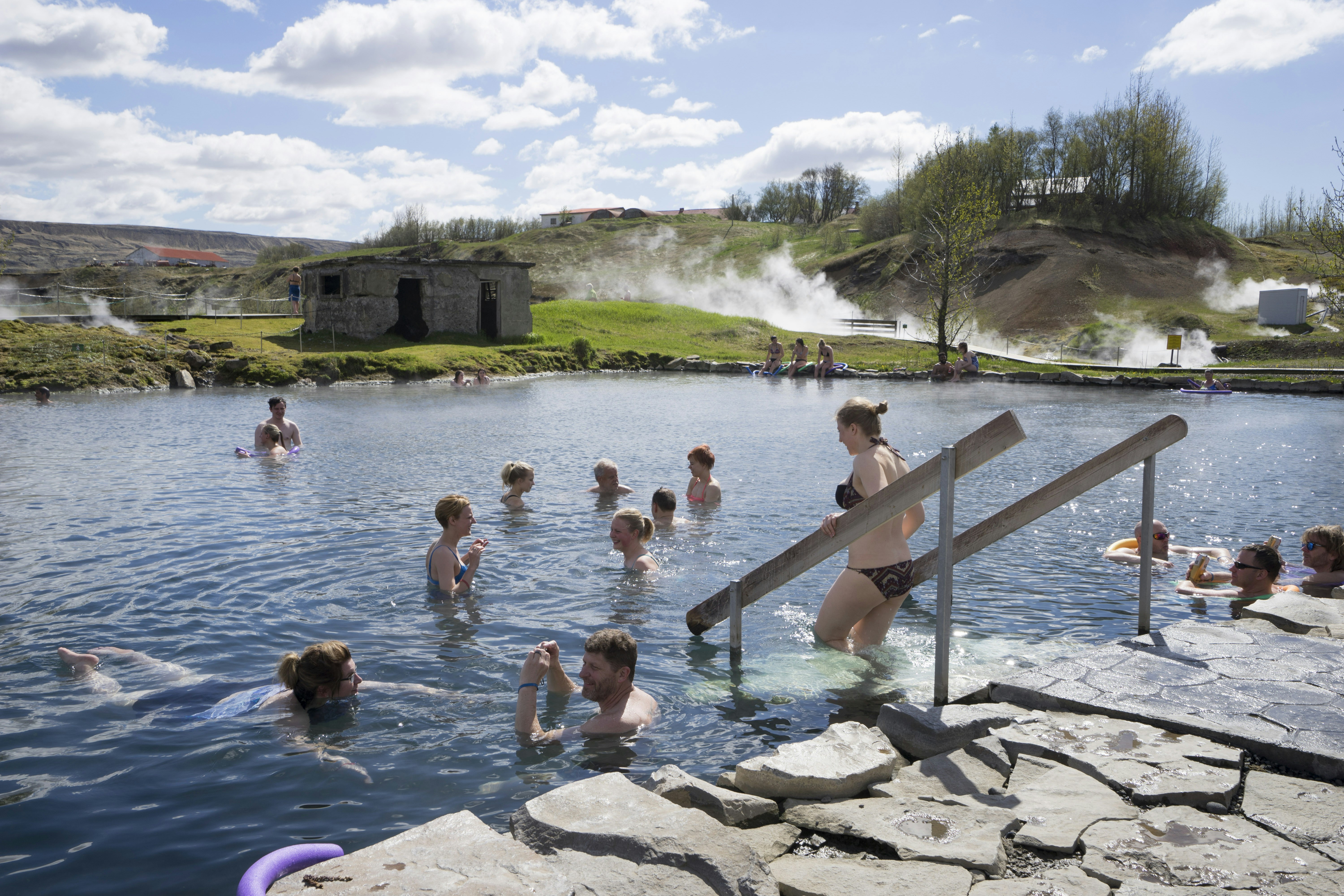
8. Take a budget-friendly swim with the locals
The most authentic and budget-friendly way to enjoy Iceland' s geothermal energy is at the public swimming pools. Practically every town and village has at least one. The water is warm and welcoming, lounging in the hot tubs is bliss, and some of the views are worth the trip alone.
This is where the locals go to exercise, socialize and play with their kids. Find your favorites, but among pools worth visiting are Álftaneslaug for its wave pool, Sundlaug Akureyrar for its thrilling waterslides, Selárlaug for being next to a salmon river, and Hofsóslaug for the amazing view of Drangey Island .
9. Don't miss Iceland's snow sports
There are so many ways to enjoy the snowy season in Iceland. Find ski resorts near Reykjavík, Ísafjörður , Neskaupstaður , Akureyri and elsewhere in the north , with ski lifts and slopes of varying levels, as well as tracks for cross-country skiing.
The backcountry skiing season lasts through May, with a range of tours on offer, including skiing from the mountaintop to the shore. Kaldbakur mountain by Grenivík is popular among backcountry skiers. It's possible to hitch a ride with a snowmobile up the mountain. The view from the top of Eyjafjörður fjord and Hrísey island is breathtaking. If you're not keen on skiing, you can take a thrilling sleigh ride down the mountain in a custom-made toboggan.
At Lake Mývatn, you can book a ride with sleigh dogs. For a motorized, action-packed adventure, Skidoo tours are particularly popular on the glaciers in the west and south.
Local tip: If you're looking for a slower-paced type of winter activity, snowshoeing might be your thing, walking up mountains in the north or exploring the black-and-white wonderworld of Dimmuborgir lava field.

10. Get out on the water to see whales and seals
When you're out on the open ocean and feel the salty air and wind in your hair, you sense a special kind of freedom, and if you're paying attention, you might see seabirds catch fish or even a blowing whale. Húsavík is the best place to go whale watching in Iceland, with many tours on offer and a high sighting ratio – even blue whales are occasionally seen here. Tours also go from Hauganes and Reykjavík. Seal-watching tours depart from Hvammstangi. Watching these curious creatures sunbathe in their natural habitat is delightful. Operators in Dalvík and Akureyri also take hopeful whale spotters out on daily excursions.
Alternatively you can sign up for a sea kayaking tour for a slower and more intimate exploration of coastal regions. Find operators in Stykkishólmur and Ögur in Ísafjarðardjúp, among other places. Paddleboarding is also becoming a popular activity in Akureyri. From Ólafsfjörður jetski tours allow people to experience the vertical cliffs of Ólafsfjarðarmúli from below.
Detour : For experiences below the surface, Strýtan DiveCenter takes experienced divers on tours to a unique geothermal chimney on the ocean floor of Eyjafjörður. At Grímsey island, people can dive and snorkel with puffins right on the arctic circle.
11. Sample some Icelandic craft beers
The local beer always says something special about the place you're visiting, and you can add a new frothy dimension to your Iceland trip by touring the country's surprisingly many microbreweries. The craft beer scene is relatively new in Iceland; the first microbrewery, Bruggsmiðjan , was founded in the tiny village of Árskógssandur in North Iceland in 2006. Its product, Kaldi, proved a hit, and in the years that followed, a growing variety of craft beers appeared on the local market.
Among the most noteworthy breweries in the greater Reykjavík area are Malbygg , RVK Brewing and Lady Brewery . There are also breweries in the rural south, in Vestmannaeyjar off the South Coast, in Siglufjörður in the far north and Ísafjörður in the Westfjords.
12. Try Iceland's fine dining
The Icelandic restaurant scene has come a long way in the past decades. Dill Restaurant earned the country's first Michelin star in 2017 and has since been joined by Óx and Sumac in Reykjavík. The latter draws inspiration from Middle Eastern cuisine. Other top recommendations include Matur og drykkur and Moss at the Blue Lagoon , which both emphasize New Nordic dishes with fresh, local and seasonal ingredients. Outside of Reykjavík, Nielsen Restaurant in Egilsstaðir deserves a special mention for its loyalty to East Icelandic food producers – highlighting local fish, meat, vegetables, grain and dairy – and game, including reindeer. Meanwhile, Norð Austur Sushi & Bar in Seyðisfjörður (open in summer only) combines the best of Japanese cuisine with the freshest Icelandic seafood.

13. Ride Iceland's unique horses
The Icelandic horse is one of a kind. The breed possesses two rare gaits in addition to the "regular" ones, the smooth tölt and fast-flying pace. For centuries Icelanders have relied on the small, sturdy and colorful breed for farm work and carrying them between places in a roadless country. Today, the horses remain Icelanders' most loyal companions as more people practice horsemanship in Iceland than in other European countries. Riding on a good tölting horse in the wild Icelandic nature is an experience like no other. Through the horse's movements, you connect with nature in a new way, and you feel incredibly free as you gallop along narrow dirt paths or across shallow lakes. Tour operators offer anything from one-hour tours for beginners to multi-day tours for experienced riders in different regions of the country in varied landscapes.
Detour: One of the most popular horseback-riding treks is across the highland on the ancient route, Kjölur.
14. Explore Reykjavík on an outdoor art trail
Combine a walking tour of Reykjavík with a "treasure hunt" where you find as many outdoor artworks as possible. The "Viking ship" sculpture Sólfar by Jón Gunnar Árnason is a given. Fewer tourists pay attention to Vatnsberinn (The Water Carrier) by Ásmundur Sveinsson in the heart of downtown or Útlaginn (The Outlaw) by Einar Jónsson on the corner of Suðurgata and Hringbraut – works by two of Iceland's most famous sculptors.
Þúfa (The Tussock) is a more recent addition to the capital's outdoor art scene but quickly became a landmark. The 8m-high grassy mound in the Grandi harbor area was created by Ólöf Nordal in 2013, inviting visitors to walk to the top for a view of the city. Outside Reykjavík, Eggin í Gleðivík by Sigurður Guðmundsson represents the eggs of 34 species of birds that nest around Djúpivogur. In Seyðisfjörður , Tvísöngur is a fascinating musical sculpture by German artist Lukas Kühne.
Local tip: Download the multi-language Reykjavík Art Walk app to learn more about the arty side of Iceland's capital.
This article was first published October 2021 and updated March 2024
Explore related stories
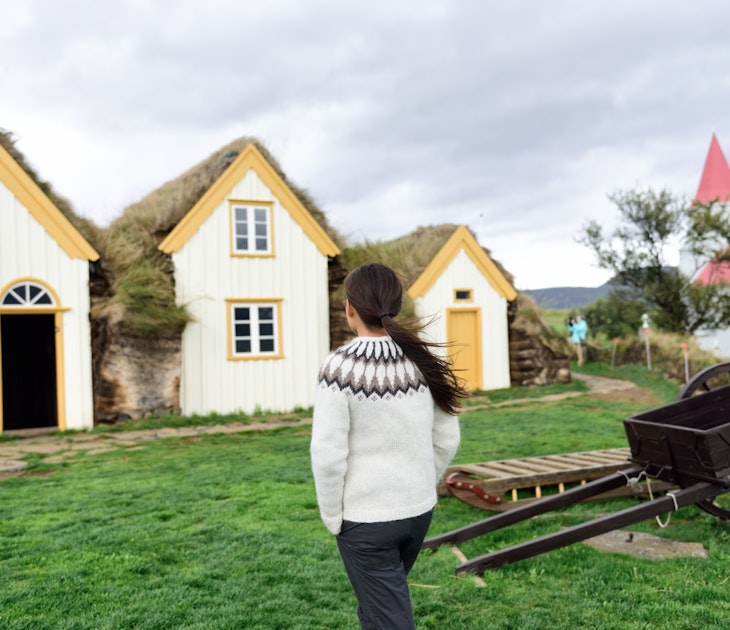
Mar 31, 2024 • 6 min read
Get to know the people, culture and history of Iceland a little better with these alternative things to do, away from the regular tourist trail.

Feb 19, 2024 • 7 min read
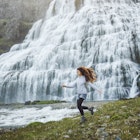
Nov 23, 2023 • 10 min read

Jan 2, 2023 • 12 min read
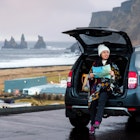
Mar 2, 2022 • 5 min read
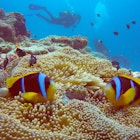
Aug 25, 2020 • 5 min read
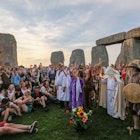
Jun 18, 2020 • 5 min read
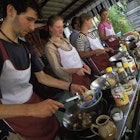
Nov 12, 2019 • 6 min read

Sep 24, 2019 • 5 min read

Jul 15, 2019 • 5 min read
- Sep 6, 2023
- 10 min read
Virtual Reality in Tourism: A Transformative Travel Experience
Welcome to the future of travel, where innovation meets exploration, and the boundaries of the world are redefined. As travel enthusiasts and visionary tourism entrepreneurs, you're about to embark on a journey into the fascinating realm of "Virtual Reality in Tourism."
In this comprehensive guide, we'll explore how Virtual Reality (VR) is revolutionizing the travel industry, offering unprecedented experiences to travelers and exciting opportunities to businesses.

The Emergence of Virtual Reality in Tourism:
In an era marked by rapid technological advancement, Virtual Reality has emerged as a game-changer in the tourism industry. It's not merely a buzzword but a transformative force that allows us to explore, experience, and envision travel in ways previously thought impossible.
Before we dive deeper, let's establish what Virtual Reality is. VR is a technology that immerses users in a simulated, computer-generated environment. This immersive nature of VR makes it a powerful tool for tourism, offering travelers a window to destinations and experiences from the comfort of their homes.
Explore Virtual Tourism Platforms:
Virtual Reality vs. Augmented Reality: To kick off our exploration, it's crucial to differentiate between Virtual Reality and Augmented Reality in the context of tourism. While AR enhances the real world with digital information, VR creates entirely virtual environments. In the tourism sphere, VR stands out as the ultimate vehicle for immersive experiences .
Which are the Popular VR Tourism Platforms?
1. Google Earth VR: “ Google Earth VR” is your passport to a virtual globetrotting adventure. With this platform, you can explore famous landmarks, remote destinations, and the wonders of our planet without leaving your home. Wander through the bustling streets of Tokyo, stand in awe of the Grand Canyon's majesty, or take a virtual stroll along the Seine in Paris.

2. Oculus Travel: Powered by Oculus, “Oculus Travel” opens doors to captivating virtual journeys. It provides users with access to a wealth of 360-degree videos and interactive experiences, making it feel like you're right in the heart of your chosen destination. From serene natural landscapes to bustling urban centers, Oculus Travel has it all.
3. VR Travel Agencies: Companies like “YouVisit” have revolutionized the way we plan our vacations. These specialized VR travel agencies offer comprehensive VR travel experiences, enabling you to explore potential destinations, accommodations, and attractions before you make your travel plans. It's like test-driving on your vacation.
4. Museums and Historical Sites in VR: Even museums and historical sites have joined the VR revolution. Now, you can take virtual tours of renowned cultural institutions and iconic historical landmarks. This not only brings history and culture to life but also fosters a sense of connection with the past.

What are the Benefits of Virtual Reality in Tourism?
Now that we've glimpsed into the world of VR tourism platforms, let's delve deeper into the myriad benefits that Virtual Reality brings to the tourism industry.
1. Enhanced Pre-Trip Planning
Virtual Reality equips travelers with a powerful tool for pre-trip planning. Imagine planning your dream vacation with the ability to virtually visit destinations, walk through hotels, and get a feel for the local ambiance.
VR empowers travelers to make informed decisions and create personalized itineraries that match their preferences and expectations.
2. Immersive Destination Exploration
The allure of Virtual Reality lies in its ability to transcend geographical boundaries. It allows you to visit places that might otherwise be inaccessible or far off.
Imagine standing amidst the ruins of Machu Picchu, wandering through the bustling markets of Marrakech, or simply gazing at the ethereal Northern Lights—all in stunning virtual detail. VR grants access to destinations and experiences that might otherwise remain distant dreams.
3. Environmental Sustainability
In an era of increasing environmental awareness, VR in tourism emerges as a sustainable alternative. By reducing the need for physical travel, it contributes to a more eco-conscious approach to exploration.
The carbon footprint associated with long-haul flights and extensive road trips can be significantly reduced when travelers turn to VR for their wanderlust fix.
4. Cost-effective Travel Experiences
Virtual travel isn't just about sustainability; it's also about affordability. For budget-conscious travelers, VR opens doors to cost-effective travel experiences. You can explore exotic destinations, stay at luxury accommodations, and embark on thrilling adventures—all within your budget.
This affordability extends to businesses as well, making it more accessible for them to provide immersive travel experiences to a wider audience.
5. Overcoming Physical Limitations
Virtual Reality is a game-changer for travelers with physical disabilities or health concerns. It eliminates many of the barriers that can make traditional travel challenging or impossible.
Through VR, individuals who may have been previously constrained by their physical circumstances can now explore the world with newfound freedom.

What can be the limitations of Virtual Reality in Tourism?
While Virtual Reality holds immense promise, it's essential to acknowledge its limitations and consider them in the broader context of travel.
1. Lack of Physical Sensory Experiences
VR, despite its immersive qualities, can't replicate the full sensory experience of travel. You won't taste the local cuisine, feel the warmth of the sun on your skin, or smell the sea breeze. VR is a supplement, not a replacement, for real-world travel. Travelers should view it as a tool to complement their experiences rather than a substitute for them.
2. Technological and Cost Barriers
To fully embrace VR in tourism, both travelers and businesses need access to the necessary technology. This includes compatible VR headsets and a reliable internet connection. While VR technology has become more accessible in recent years, there are still barriers to overcome, including initial costs and technological literacy.
3. Limited Availability of VR Content for All Destinations
While major tourist destinations have embraced VR, less-visited places may have limited virtual content available. This inequality in content can create disparities in how different destinations are promoted and experienced through VR.
4. Potential for Over-Reliance on VR
There's a valid concern that excessive virtual travel might lead to a decline in real-world travel. This could have potential economic and cultural implications, as local economies rely on tourism, and cultural exchange often occurs through physical travel experiences.
How to Experience Virtual Tourism?
Now that we've covered the benefits and limitations, let's delve into the practical aspect of experiencing Virtual Tourism.
1. Hardware and Software Requirements
To embark on your virtual travel adventures, you'll need the right hardware and software.
Hardware: Choosing the right VR headset is essential. Options range from entry-level devices like the Oculus Quest 2 to high-end, premium headsets like the HTC Vive Pro. Your choice will depend on your budget and desired level of immersion.
Software: Accessing VR tourism platforms is the next step. Whether you're using Google Earth VR, Oculus Travel, or specialized VR travel agencies, you'll need the respective software or app to access virtual experiences.
2. Choosing the Right VR Headset
Selecting the right VR headset is a critical decision for immersive virtual travel. Consider factors such as the level of immersion you desire, your budget, and the compatibility of the headset with your existing hardware. Research thoroughly and read user reviews to make an informed choice.
3. Accessing VR Tourism Platforms
Once you have your VR headset, you can explore the world of virtual travel. Navigate to your chosen VR tourism platform, create an account if necessary, and start browsing available experiences. These platforms offer a wide range of destinations and activities to explore, ensuring there's something for every traveler's taste.
4. Choosing the Right Virtual Reality Developers
If your business is seeking to enhance its tourism offerings, selecting the right Virtual Reality developer can be a pivotal step in achieving your goals. The expertise of skilled VR developers can assist you in creating immersive and captivating virtual experiences that engage your audience and enrich your tourism services.
How to Elevate Your Tourism Business with VR?
Wondering how your tourism business can embrace Virtual Reality? Consider partnering with VR development experts like Taanga Studios . Our expertise can help create immersive virtual experiences, allowing travelers to explore destinations and accommodations in a meaningful way.
This enhances pre-trip planning and captures travelers' imagination, leading to more informed and excited customers. It's about staying ahead in an evolving industry and offering the future of travel experiences. Whether you're an entrepreneur or traveler, Virtual Reality in tourism promises a world beyond boundaries, ready to be explored.
Tips for an Immersive VR Travel Experience:
To make the most of your virtual travel adventures, consider these practical tips:
1. Creating a Comfortable VR Environment:
Find a quiet and well-lit space for your virtual travels.
Ensure your VR headset is clean and properly adjusted for comfort.
Use headphones for an immersive audio experience.
Stay hydrated, as VR experiences can be physically engaging.
2. Navigating Virtual Destinations:
Familiarize yourself with the VR controls for navigation.
Take your time exploring each destination and don't rush through experiences.
Interact with objects and elements in the virtual world to enhance immersion.
3. Engaging with Local Culture and History:
Look for guided virtual tours that provide context and historical information.
Interact with virtual guides or avatars to learn more about the destination.
Immerse yourself in the local culture by attending virtual events or trying traditional activities.
These practical tips will help you create a seamless and enjoyable VR travel experience, whether you're a seasoned traveler or a first-time explorer of virtual worlds.
Case Studies: Real-Life Success Stories
To truly understand the impact of Virtual Reality in tourism, let's explore real-life success stories of individuals and businesses that have harnessed the power of VR to enhance travel experiences.
Case Study 1: Iceland's "4D Virtual Reality Experience"
The Experience: In 2016, Iceland faced a unique challenge. While its stunning landscapes attracted tourists in record numbers, the country sought to extend its tourist season beyond the summer months. To achieve this, Icelandic tourism authorities partnered with Advania, a technology company specializing in Virtual Reality.
Implementation: Advania developed the "4D Virtual Reality Experience," allowing visitors to explore Iceland virtually during the offseason. They set up VR stations at airports, travel agencies, and key locations worldwide. Tourists could don VR headsets and embark on immersive virtual tours of Iceland's iconic destinations, including the Blue Lagoon, Geysir, and the Northern Lights.
The "4D Virtual Reality Experience" significantly extended Iceland's tourist season, attracting visitors even during the colder months.
The initiative garnered widespread media coverage and positive reviews, increasing Iceland's visibility as a year-round travel destination.
Tourists who experienced the VR tour expressed a strong desire to visit Iceland in person, leading to a noticeable boost in tourism revenue.
Case Study 2: The Ritz-Carlton's "VR Postcards"
The Experience: The Ritz-Carlton, a renowned luxury hotel brand, aimed to provide its guests with a unique and immersive travel experience. They introduced "VR Postcards," a virtual reality initiative that allowed guests to explore Ritz-Carlton properties and their surrounding destinations before making reservations.
Implementation: The Ritz-Carlton provided VR headsets in select rooms or public spaces of their hotels. Guests could put on headsets and embark on 360-degree VR tours of various Ritz-Carlton properties worldwide, including luxurious suites, spas, and dining areas.
The VR experience also included virtual tours of nearby attractions and activities, enticing guests to explore the surrounding area.
VR Postcards enhanced the pre-trip planning experience for guests, helping them make informed decisions about their stay.
The initiative led to increased bookings and guest satisfaction, with many visitors stating that the VR tours exceeded their expectations.
The Ritz-Carlton saw a notable boost in revenue as more guests were inspired to explore different properties within the brand.
These case studies illustrate how Virtual Reality can be effectively integrated into the tourism industry to attract, engage, and convert travelers. By providing immersive virtual experiences, businesses and destinations can captivate their audience and enhance the overall tourism experience.
What are the Future Trends in VR Tourism?
As we journey further into the realm of Virtual Reality in tourism, let's explore the future trends and developments that promise to shape the industry.
Predictions for Continued Growth:
The future of VR in tourism appears promising, with several key trends on the horizon:
Expanding Content Library: Expect a continual expansion of VR content, with more destinations, attractions, and experiences becoming available in virtual form.
Enhanced Interactivity: VR experiences will become increasingly interactive, allowing users to participate in activities and engage with the virtual environment more deeply.
Personalized Experiences: Customized VR travel experiences will become the norm, catering to individual preferences and interests.
Integration with Augmented Reality: The integration of AR and VR will create seamless mixed-reality experiences, enhancing the richness of virtual travel.
Emerging Technologies and Innovations:
The future of Virtual Reality in tourism is closely tied to technological advancements. Keep an eye on these emerging technologies:
5G Connectivity: The rollout of 5G networks will improve VR streaming quality and reduce latency, making VR experiences smoother and more accessible.
AI and Machine Learning: AI-powered virtual guides and chatbots will enhance the interactivity of VR travel experiences, providing real-time information and assistance.
Haptic Feedback Devices: Haptic technology will add a new layer of immersion, allowing users to feel sensations and textures in the virtual world.
Improved VR Headsets: Ongoing developments in VR headset technology will lead to more comfortable, lightweight, and affordable devices.
Potential Challenges and Solutions:
While the future of VR in tourism is bright, there are challenges to address:
Accessibility and Inclusivity: Ensuring that VR experiences are accessible to all, like individuals with disabilities, will be a priority.
Content Quality Control: Maintaining high-quality, accurate, and culturally sensitive content is essential to avoid misrepresentations of destinations and cultures.
Privacy and Data Security: Protecting user data and privacy in VR experiences will be critical, especially as VR becomes more personalized.
Virtual Reality in tourism isn't a mere trend but a transformative force that's reshaping how we explore the world. As travel enthusiasts and forward-thinking tourism entrepreneurs, embracing VR can unlock new opportunities and enrich the travel experiences we offer to others.
Virtual Reality, with its power to enhance pre-trip planning, provide immersive destination exploration, promote sustainability, offer cost-effective travel experiences, and overcome physical limitations, has the potential to revolutionize the way we travel. It's not about replacing real-world travel; it's about enhancing it, extending it, and making it more accessible.
As you embark on your virtual adventures, remember that the journey is just beginning. Explore the predictions, emerging technologies, and innovations in VR tourism with a sense of excitement and curiosity. While challenges may arise, they are opportunities in disguise, waiting for innovative solutions.
So, are you ready to step into the captivating world of Virtual Reality in tourism? It's time to discover the limitless horizons it brings to the travel industry and embrace the future of exploration.
Additional Resources:
Explore recommended VR tourism platforms and apps.
Dive deeper into the world of Virtual Reality in tourism with further reading and research sources.
For expert guidance on implementing VR in your tourism business, contact Taanga Studios, a leading VR development company, at [email protected] .
We hope this comprehensive guide has inspired you to embark on your virtual travel adventures and to seize the exciting opportunities that VR in tourism offers. Happy travels, whether they be real or virtual!
- Guides & Tutorials
Related Posts
How AR VR Development Services Are Changing the Real Estate Industry?
Integrating AR and VR in Education: A Practical Guide
Virtual Reality in Fashion: Design, Shopping, and Trends
The Best Tours in North Iceland
North Iceland is a region less travelled yet overflowing with hidden treasures. It offers a variety of experiences that cater to every kind of traveller. From thunderous waterfalls to tranquil hot springs, the landscape is as diverse as the activities available. In this post, we’ll explore the best tours in North Iceland, each offering a unique way to engage with this remarkable part of the world. Whether you’re seeking adventure, relaxation, or a deep dive into Icelandic culture, North Iceland has something special in store for you. Let’s journey through the must-visit spots and hidden gems that make North Iceland a destination worth exploring.
The Forest Lagoon
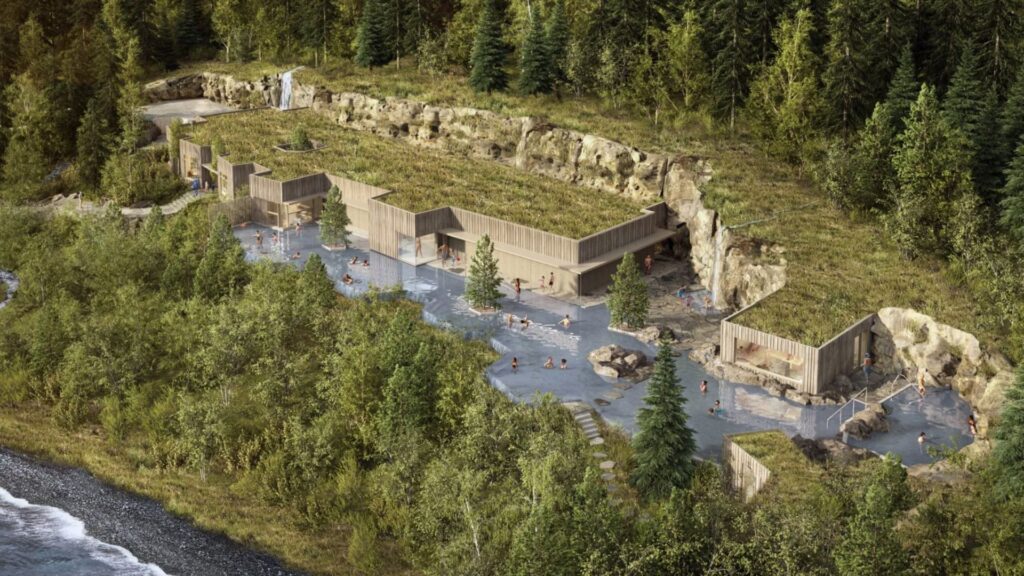
Forest Lagoon is a new geothermal spa located in Vaðlaskógur forest, which is just a few minute’s drive from Akureyri . It is known locally in Iceland as the “Capital of the North”. The spa offers stunning views overlooking one of Iceland’s longest fjords, Eyjafjörður. And its unique location, surrounded by birch and pine trees, truly sets it apart. The Forest Lagoon aims to create an unforgettable experience for its guests by focusing on every detail. During a visit to the Forest Lagoon, guests can experience the view, tranquillity and energy of Vaðlaskógur, the forest surrounding the baths.
The Forest Lagoon features two pools. The large pool is 530m2, with a temperature of around 37°C (98.6F), two swim-up bars, and an indoor entry. The small pool is 53m2, with a temperature of about 40°C (104F). The sauna uses dry heat, humidity at around 20%, and temperature around 80°C. Guests can enjoy all the health benefits of a dry sauna while experiencing a unique view of Eyjafjörður and the surrounding mountains. Swimsuits must be worn in the sauna.
The Forest Lagoon has a cold pool next to the dry sauna. It is recommended that guests try combining the two to experience the health benefits. The temperature of the cold pool is 11°C (51.8F).
Dining at the Forest Bistro is essential to the Forest Lagoon experience. The wood-cladded bistro area provides quality food in an exotic environment. The bistro has a view over Eyjafjörður, and its indoor fireplace adds to the overall experience of the Forest Lagoon.
The Forest Lagoon can be reached by less than a five-hour drive or 45 minutes by plane from Reykjavík.
The Diamond Circle Tour
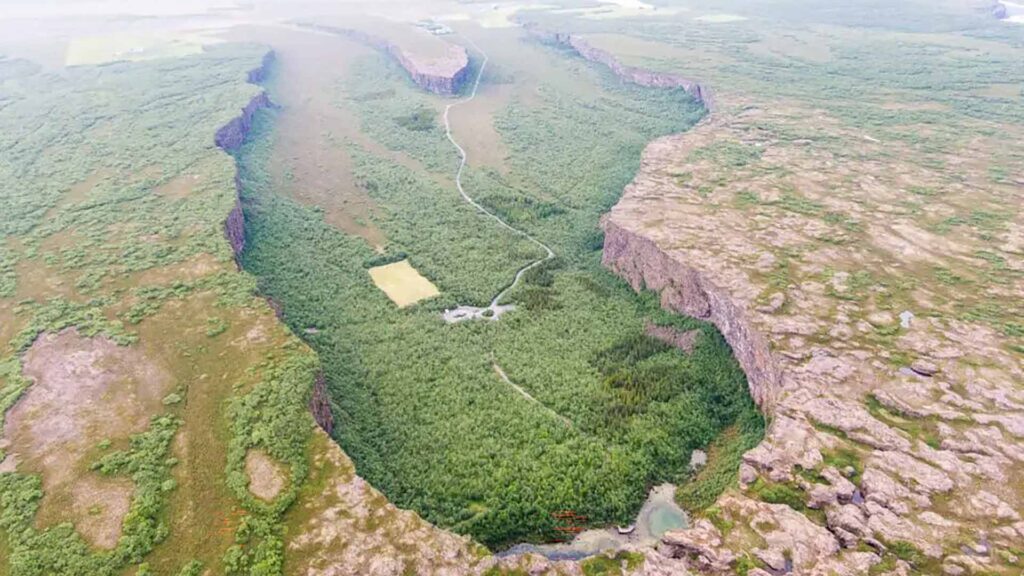
The Golden Circle in South Iceland is a renowned sightseeing route in Iceland that you may have heard of. However, North Iceland boasts the Diamond Circle . This route, subtly emerging as one of the best tours in North Iceland, guides visitors through an array of stunning natural landscapes, each distinct in character and story.
From the majestic Waterfall Goðafoss, travellers witness the raw power of Icelandic nature, where water thunders over a vast expanse. Moving on, the Lake Mývatn area unveils a contrasting scene of serene beauty. It is dotted with volcanic features like the steaming Hverir mud pits and the geothermal expanse of Námafjall.
Further along the route, Dettifoss Waterfall presents a spectacle of nature’s force, where water plunges powerfully into a rugged canyon, making it one of the most captivating sights in Iceland. The journey continues through the Jökulsárgljúfur Canyon, a testament to Iceland’s geological history with its striking basalt columns at Hljóðaklettar and the uniquely shaped Ásbyrgi Canyon.
Traversing the Diamond Circle is more than just a scenic drive. It explores the dynamic and diverse natural beauty that defines North Iceland, offering visitors a deep dive into the heart of its most stunning landscapes.
Whale Watching in Húsavík
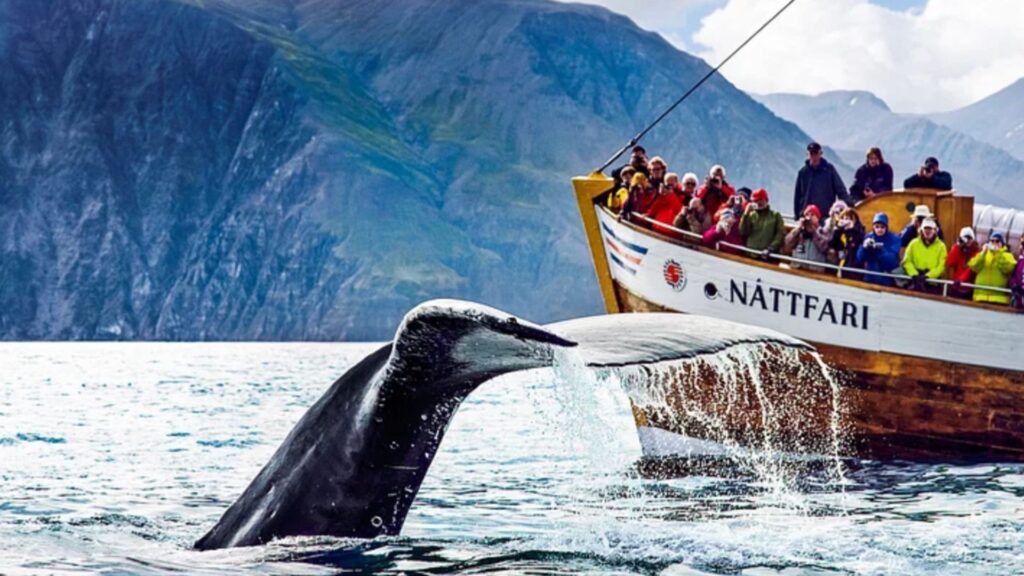
When visiting North Iceland, a whale-watching tour from Húsavík , hailed as the Whale Capital of Iceland, is an unmissable experience. To join this extraordinary adventure, arrive at the ticket office in Húsavík at least 30 minutes before your scheduled departure.
This 3-hour journey takes you into Skjálfandi Bay’s heart, a marine life haven. The tour offers an excellent opportunity to observe whales, dolphins, and various sea birds in their natural environment. Embrace the charm of sailing on a traditional Icelandic oak boat. This experience adds a touch of authenticity to your adventure.
As you cruise the bay, take a moment to enjoy the warm comforts of hot cocoa and cinnamon buns. This tour is more than just a wildlife excursion. It’s a cultural experience deeply rooted in the maritime heritage of Iceland.
The Original Husavik Whale Watching tour, operated by North Sailing, is renowned for its commitment to providing authentic and sustainable wildlife activity.
Lake Mývatn, Waterfall & Volcanos Tour from Akureyri
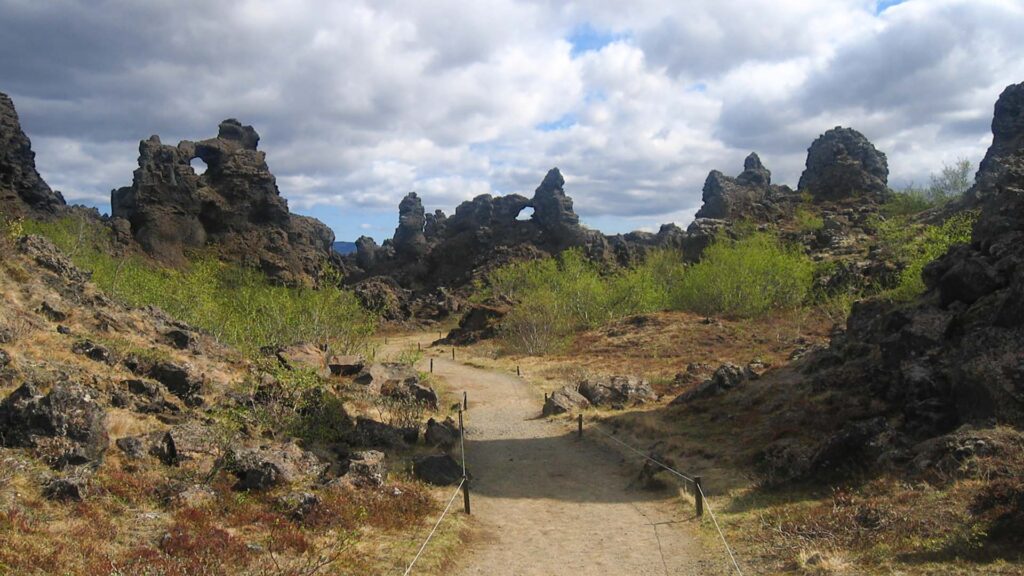
In the heart of North Iceland lies a region rich in natural phenomena, with Lake Mývatn as its centrepiece. This area is a microcosm of Iceland’s dynamic geology, offering a variety of unique landscapes and formations. On the Lake Mývatn, Waterfall & Volcanos Tour from Akureyri , you will visit some of the most beautiful places in the region. If you arrive by cruise ship, we recommend the same tour but adapted to cruise ship visitors.
- Goðafoss Waterfall: Known for its majestic beauty, Goðafoss Waterfall is a striking natural landmark. The water cascades down from a height of about 12 meters into a wide river, creating a powerful and awe-inspiring sight. The sound of the water roaring as it falls is a testament to the waterfall’s strength and beauty.
- Lake Mývatn Craters: The area around Lake Mývatn is renowned for its pseudo-craters at Skútustaðagígar. These unique geological formations, often mistaken for volcanic craters, were created by steam explosions as lava flowed over wetlands. Today, these grass-covered craters provide picturesque views and testify to the volcanic activity that shaped the region. The lake formed around 2,300 years ago is a hotspot for birdwatchers, with its diverse birdlife, including various duck and goose species.
- Dimmuborgir: The lava field of Dimmuborgir stands out with its extraordinary formations. Unlike most of Iceland’s flat, moss-covered lava fields, Dimmuborgir features dramatic shapes and structures that create a gothic and otherworldly landscape. Visitors can follow walking trails to explore these fascinating formations from the same volcanic eruption that formed the Skutustaðagígar craters.
- Hverir – Námaskarð Geothermal Area : The Hverir geothermal area near Námaskarð is a showcase of Iceland’s geothermal activity. Here, the earth comes alive with steam vents, boiling mud pots, and hot springs. The vibrant colours and active geothermal features create an almost alien landscape, contrasting the surrounding areas.
Each location around Lake Mývatn provides a unique glimpse into the natural forces that have shaped Iceland’s landscape. This region is a must-visit for those exploring the north of the island.
The Battle of Iceland – VR Experience
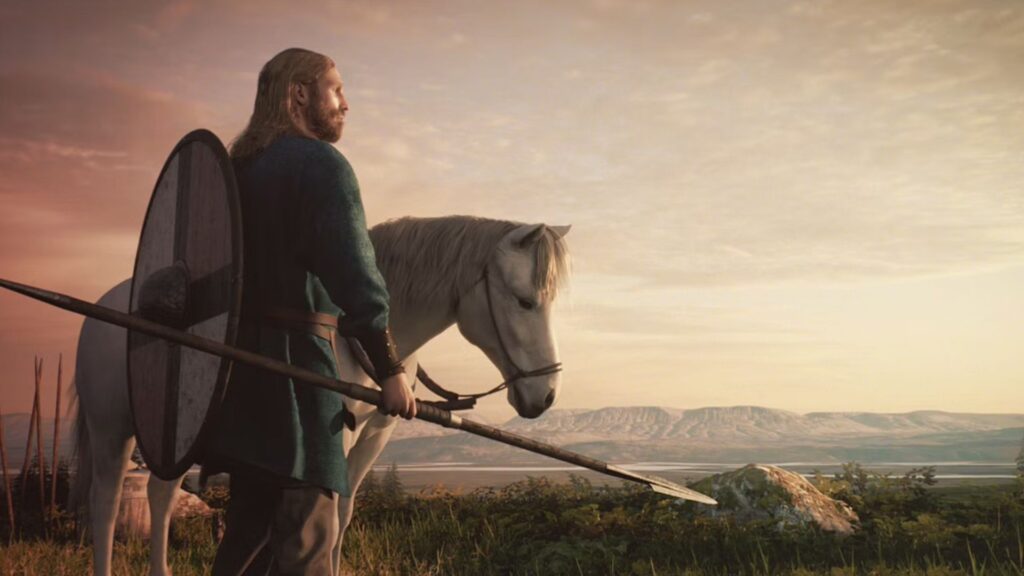
The “ 1238 The Battle of Iceland ” experience is at the heart of exploring Iceland’s past. This is probably the most unique experience on our list of best tours in North Iceland. This immersive presentation welcomes visitors of all ages, inviting them to engage with history in a modern and interactive way. The exhibition is in the town of Sauðárkrókur , west of Akureyri.
Unlike conventional museums, this exhibition focuses on bringing history to life through virtual reality technology. It’s designed to captivate everyone, from history enthusiasts to those with little prior interest. The immersive, interactive installation offers a new and artful way to experience history.
The exhibition’s centrepiece is the Sturlung Era (1220 – 1262) from the Icelandic Sagas, the most tumultuous and violent period in Iceland’s history. This era, known for its brutal clan clashes and civil war, ended Iceland’s independence. The exhibition recreates this saga through interactive technology, offering visitors an engaging and dramatic insight into Iceland’s past. It’s not just about observing history; it’s about experiencing it in a vivid and impactful way.
“1238 The Battle of Iceland” offers a unique opportunity to step back in time and immerse oneself in one of the most critical periods of Icelandic history, brought to life through cutting-edge technology.
Mývatn Nature Baths
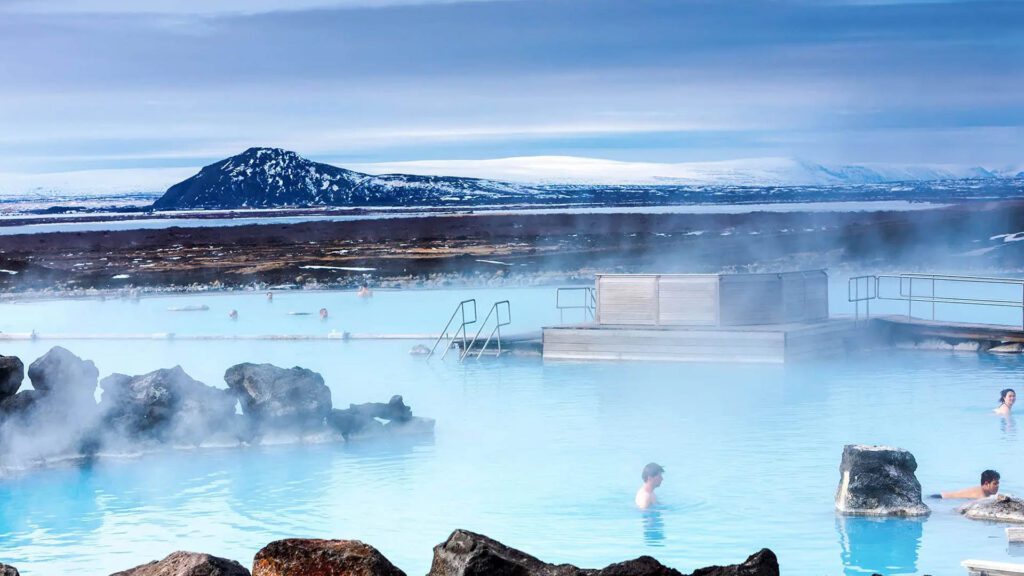
The Mývatn Nature Baths offer a distinctive geothermal bathing experience in Iceland. The water for the lagoon has a warm and inviting temperature between 36-40°C. It comes directly from the National Power Company’s borehole in Bjarnarflag. There are similarities between the Mývatn Nature Baths and the Blue Lagoon. But most agree that the former is a more personal experience.
The water has a unique composition. It is rich in minerals and alkaline, characteristics that make it particularly beneficial for bathing. Its chemical makeup naturally inhibits the growth of unwanted bacteria and vegetation, eliminating the need for chlorides or other disinfectants. This results in a pure and natural bathing experience. An important note for visitors: the geothermal water in this area has a high sulfur content, more so than in other regions of Iceland.
While sulfur is known for its positive effects on respiratory ailments and skin conditions, it can tarnish and damage jewellery made of brass or silver. Therefore, it’s advisable to remove such items before entering the water. Adjacent to the lagoon, the Mývatn Nature Baths also feature two steam baths. Constructed directly over a geothermal area, these steam baths offer an immersive experience as natural, sulfur-free steam rises through holes in the floor. Maintaining a temperature of around 50°C with nearly 100% humidity, these steam baths provide a deeply relaxing environment. In 2019, windows were added to these baths, allowing guests to enjoy the stunning views while they relax.
Guests can alternate between the steam baths and cooling down in the outdoor shower, making the most of this unique, natural spa experience.
The Beerbath Spa
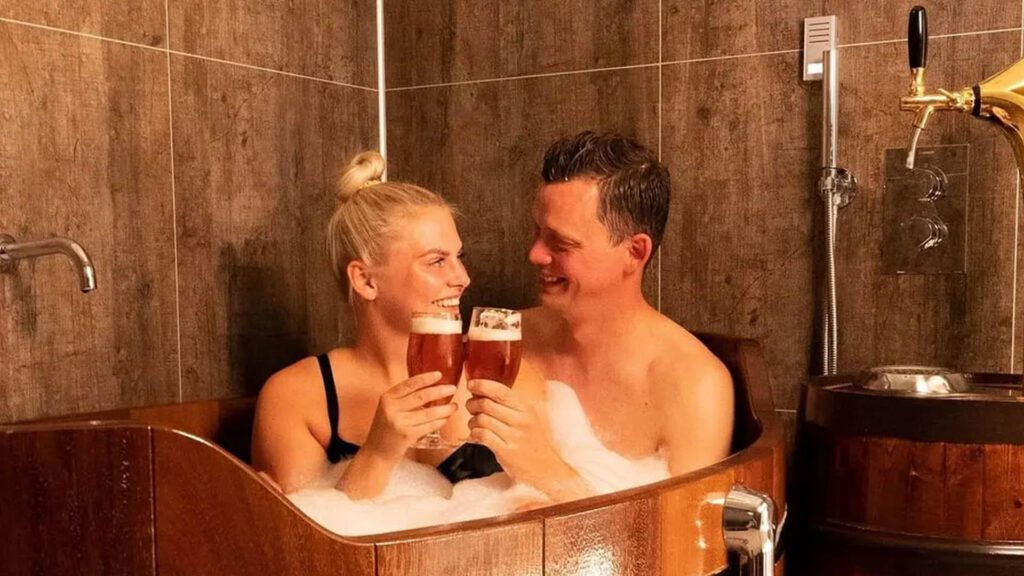
Last but not least on our list of the best tours in North Iceland: Bjórböðin SPA is a spa located in Árskógssandur, which is situated in the north of Iceland. The spa offers a unique experience where you can relax and de-stress by soaking in warm beer. Beer yeast is used in different ways, and the most common form is in a tablet, where the yeast’s effects are very beneficial to the body.
The beer bath is one of the most popular experiences at the spa, where you can bathe in both young beer and live beer yeast for several hours. This has a great effect on the body and skin, leaving you feeling refreshed and rejuvenated.
In addition to the beer baths, all the tubs also have a draft beer tap so visitors aged 20 and over can enjoy a cold beer while they bathe. The spa also has an outside hot tub for bigger groups and a new restaurant that serves beer-related food.
North Iceland is Definitely Worth the Visit
As we end our exploration of the best tours in North Iceland, it’s evident that this region provides a wide range of experiences for all kinds of travellers. From the breathtaking natural beauty of the Diamond Circle to the unique geothermal marvels of the Myvatn Nature Baths, each tour offers a chance to connect deeply with the land and its history.
The best tours in North Iceland showcase the region’s stunning natural wonders and provide insight into Icelandic culture and tradition. They encourage you to experience the magic of the north, and we hope you will consider travelling to that part of Iceland.
Leave a Reply Cancel Reply
Save my name, email, and website in this browser for the next time I comment.
- Food & Drink in Iceland 72
- History & Traditions of Iceland 146
- Holidays in Iceland 32
- Shopping in Iceland 15
- Things to do in Reykjavik 92
- Traveling in Iceland 106
Explore Our Tours

Private 7-Hour Airport Transfer & Tour
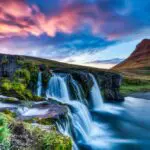
3 Days In Iceland : Reykjavik, Golden Circle & The South Coast
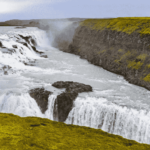
2 Days in Iceland – Golden Circle & The South Coast
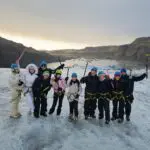
South Coast Tour & Glacier Hike
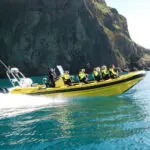
Whale Watching Adventure by Speedboat
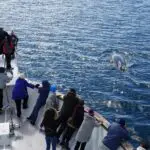
Luxurious Whale Watching Cruise from Reykjavik
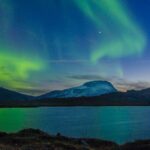
Hunt the Northern Lights via Cruise Ship
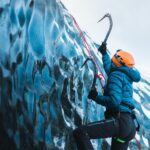
Glacier Hike Discovery on Vatnajokull
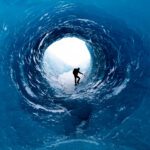
Explore the Ice Caves of Vatnajökull

IMAGES
VIDEO
COMMENTS
Welcome to Iceland 360 VR! Select one of hundreds of locations around Iceland in the search field, panorama ... Reykjavik 360 degree VR tour. churches; city; houses; parks; Reykjavík; Snæfellsnes peninsula tour. beaches; craters; glaciers; sea cliffs; See more Virtual Tours. Themed Virtual tours.
Iceland is one of the natural wonders of the world. It features a natural landscape like no other and in Winter this is transformed into what feels like anot...
South Coast VR tour. This VR tour takes you to all the major points of interest along the south coast of Iceland. Waterfalls, Sea Cliffs, Black Sand Beaches, Glaciers and Glacier lagoons. See a map of the locations in this VR tour below. The first panorama is from Hveragerði, a small town and municipality in the south of Iceland located 45 km ...
Iceland VR Experiences: Check out Viator's reviews and photos of Iceland tours. Close Add to wishlist • List Full. Create New Max wishlists reached. Close ... Nearby Iceland tours. Explore Iceland tours. Popular tours in Europe. People also visited. Faroe Islands. Scotland. Northern Ireland. Ireland. Norway. England. Netherlands. Sweden ...
Reykjavik: Silfra Snorkel Tour & Fly Over Iceland VR Ticket. Activity provider:Adventure Vikings. From $184.98 per person. Check availability. ... Then head over to Reykjavik and visit Fly Over Iceland for a surreal virtual reality tour of Iceland in all its glory. Contact Fly Over Iceland to move your admission to another time or day that ...
Enjoy Inside360's Iceland trip in 360 degree full view.We visited Iceland's fantastic scenery and surreal places to catch this immersive virtual trip through...
Shot using Insta360 X3, Best360 Monopod Pro Carbon Fiber Edition, and Best360 Aluminium Camera Clamp.👉Insta360 X3 https://bit.ly/3RW5TNg👉Best360 Monopod Pr...
Book Your Admission Tickets to the Biggest Whale Exhibition in the World. Availability All Year. Duration 1-2 hours. Departs From Reykjavik. View Tour. 31 USD. Join us in Reykjavik for an interactive tour! FlyOver Iceland is a new, virtual experience that takes you on an incredible aerial journey across Iceland.
Iceland | VR Travel ... Search
Set out on a journey that challenges the ordinary in Reykjavik with the Silfra Snorkel Tour & Fly Over Iceland VR Ticket.
A privately guided tour of Iceland allows you to relax and take in the sights with a local at the wheel; Day 6: Lake Mývatn. Visit more of this interesting area or go on fun excursions. Nearby, you could hop onboard a whale-watching boat tour from the village of Húsavík. It is known as the "whale watching capital of Iceland" after all!
The Battle of Iceland - VR Experience. 1238 The Battle of Iceland is an immersive exhibition beyond the regular history museum. Welcoming people of all ages, the exhibition offers its guests to see and take part in history through virtual reality.
Lockdown doesn't mean you can't still explore! We've put together some highlights from our Iceland virtual tour (including the spectacular Northern Lights) s...
This immersive footage was shot by Ragnar Th. Sigurðsson, founder of Arctic Images, and drone pilot Arnar Þór Þórsson using the Insta360 Pro 2, an 8K VR camera.The project was sponsored by the Perlan museum, which hosts a state-of-the-art 8K planetarium and other exhibitions on Iceland's geographic wonders.. How the 8K VR drone footage of the volcanic eruption was shot
4. Explore Iceland's caves. From ancient lava tubes to ever-changing ice caves and mysterious artificial caves, Iceland has a range of underground adventures for everyone. Some 200 artificial caves have been carved into sandstone rock between Selfoss and Vík in South Iceland.
Tourists could don VR headsets and embark on immersive virtual tours of Iceland's iconic destinations, including the Blue Lagoon, Geysir, and the Northern Lights. Results: The "4D Virtual Reality Experience" significantly extended Iceland's tourist season, attracting visitors even during the colder months.
For a chance to win a round trip ticket, like, subscribe and leave a comment on where you'll go in Iceland.In this episode of Escape Now, we're taking you on...
The Battle of Iceland - VR Experience. The "1238 The Battle of Iceland" experience is at the heart of exploring Iceland's past. This is probably the most unique experience on our list of best tours in North Iceland. This immersive presentation welcomes visitors of all ages, inviting them to engage with history in a modern and ...